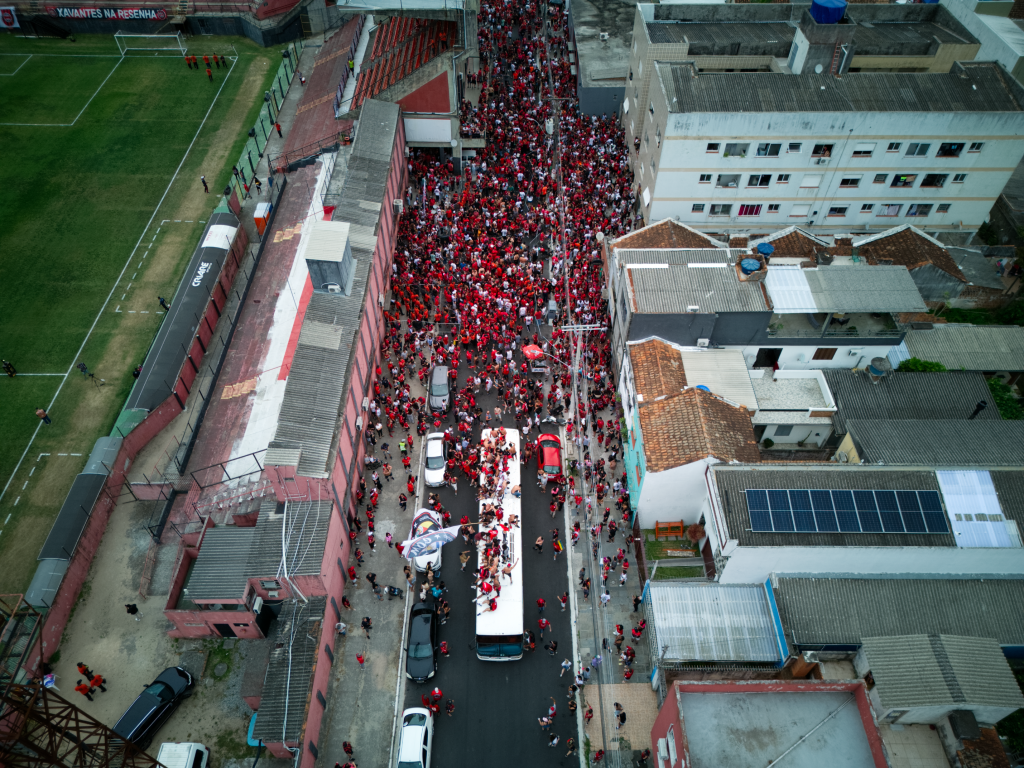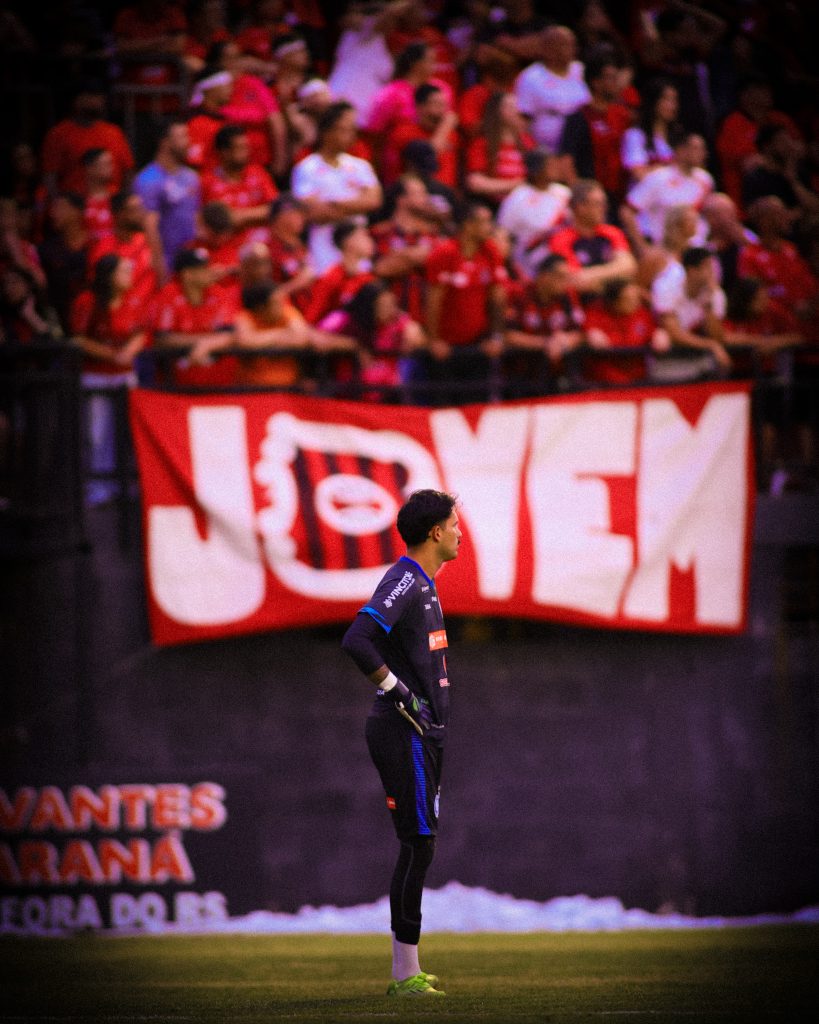Latest
Page: Latest
In-depth conversations with the voices shaping culture, calcio, and society. Explore unique perspectives, personal stories, and inspiring journeys from around the world.
Latest
To celebrate the 80th anniversary of Sorrento Calcio, “Sorrento, Worn Over Time” is an editorial project accompanying the launch of the anniversary jersey designed by Ezeta. A story that chooses to begin with what makes this milestone truly meaningful: people, and the deep bond between a club and its city.
Shaping the visual narrative is the photographic gaze of Giuseppe Romano, who moves through Sorrento following gestures, places, and people that define the city’s identity every day. His images capture a living relationship between the jersey, the city, and those who wear it, leaving space for time rather than emphasis.
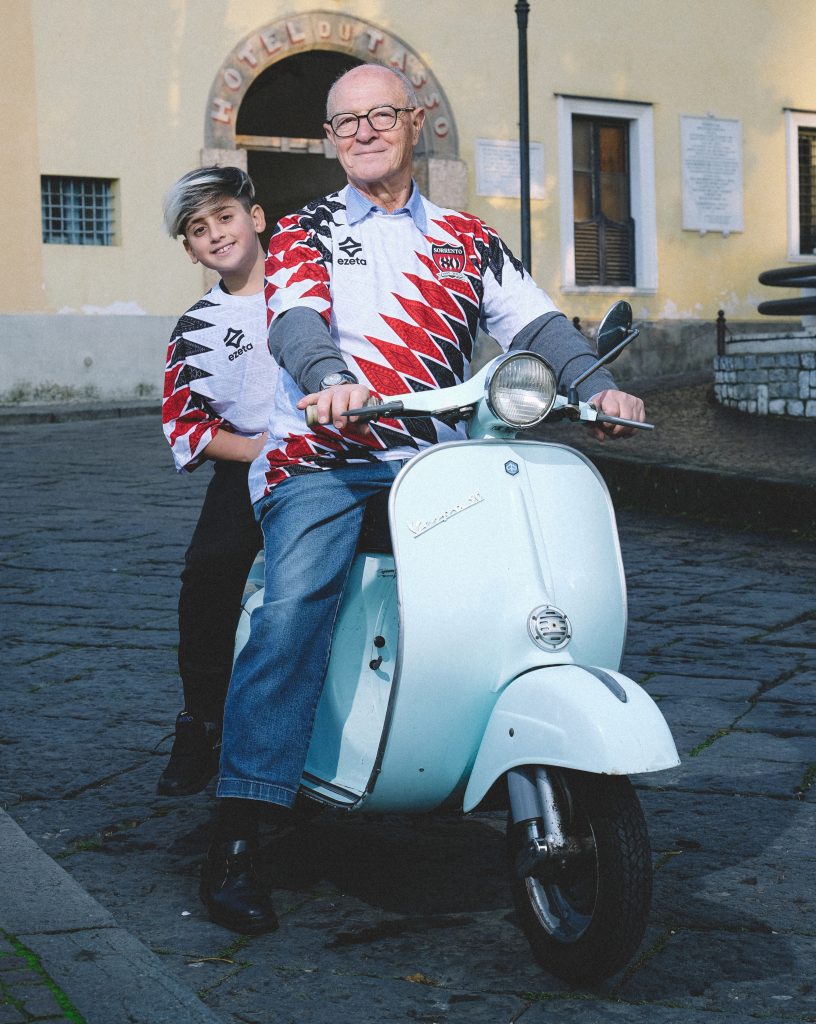
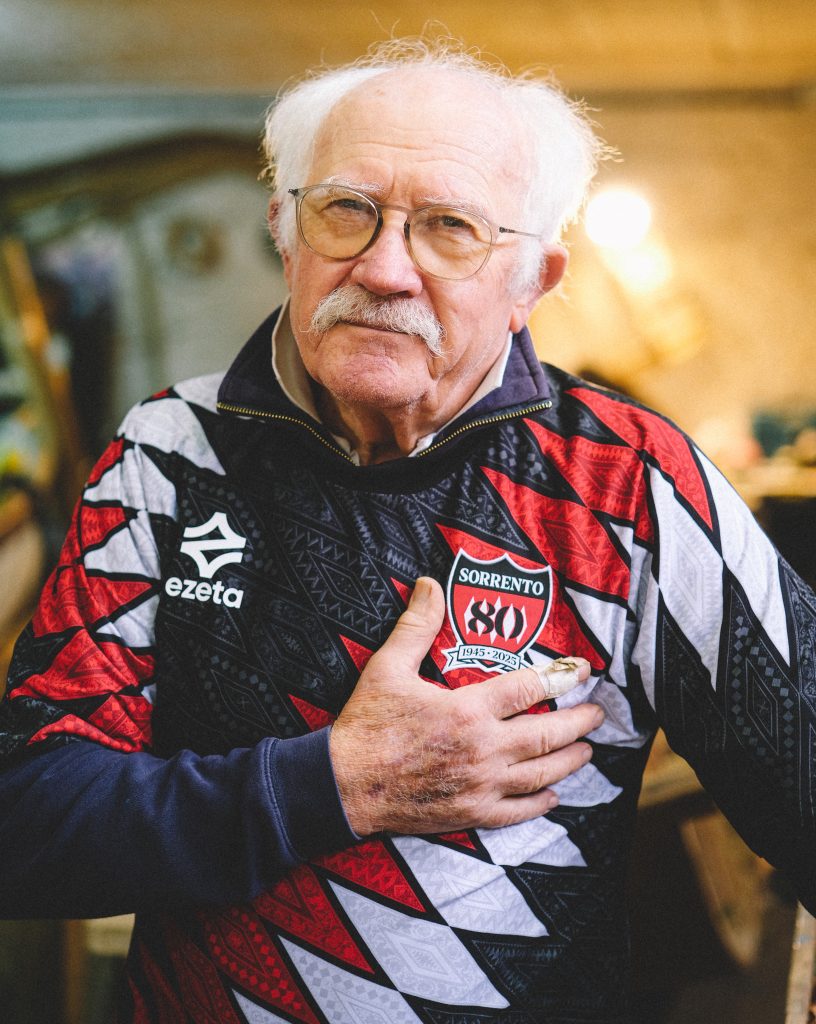
The project originates from a proposal by Ezeta, who envisioned this anniversary not as a purely aesthetic celebration but as an opportunity to give voice to a shared history. From this intuition came the collaboration with Magliofili and Sport Media House, who curated the creative direction of the project, bringing together different sensibilities and languages to build an editorial narrative that enhances the jersey’s design and cultural meaning.
This story did not start in a photographic studio, but in the streets of Sorrento. The project took shape by walking through the city, knocking on workshop doors, entering laboratories, and stopping in places of everyday life. Those who live and work in Sorrento were asked what the city represents to them, and to wear a jersey that celebrates eighty years of belonging, memory, and identity.
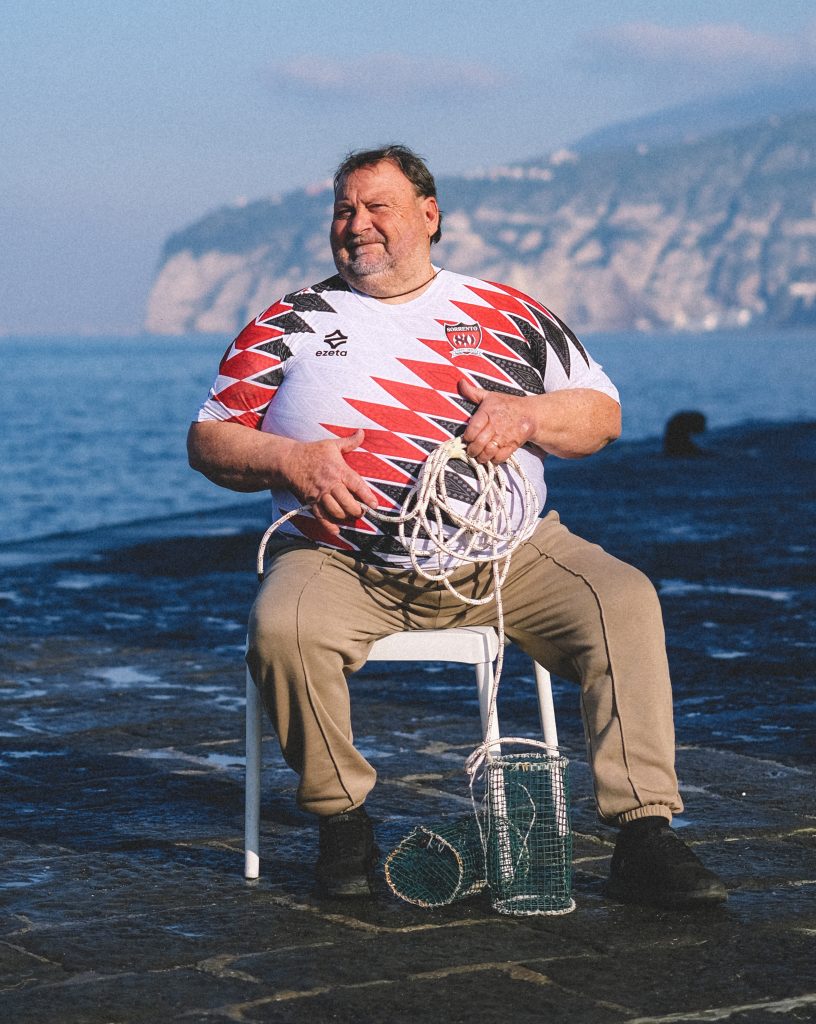
The jersey thus becomes something alive, far from a purely celebratory or symbolic representation. It is part of daily life: work, routine, effort, and joy. A legacy that is not preserved, but worn.
The two versions of the jersey, white and black, are interpreted by real citizens, chosen not as models but as protagonists. Not didactic portraits dividing generations, but images that speak of encounters, exchanges, and continuity between past and present.
Iconic and ordinary places throughout Sorrento become an integral part of the narrative. The city is not a backdrop, but a living context, naturally intertwined with the jersey and the situations of everyday life.
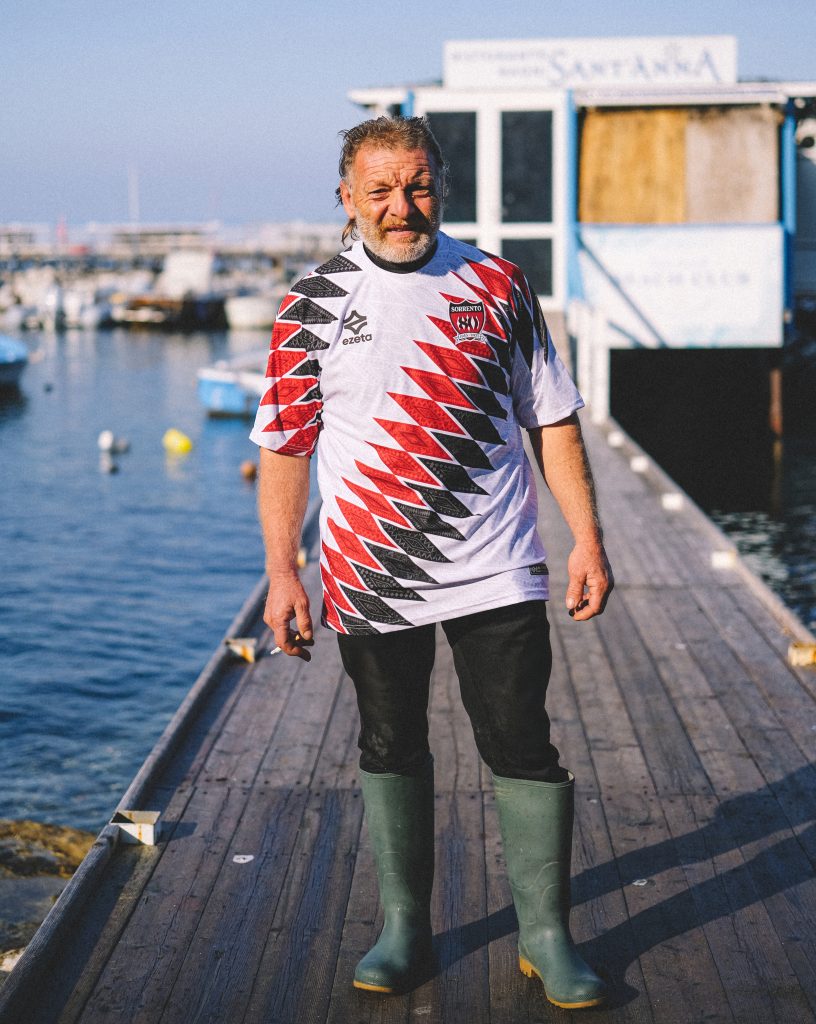
The editorial project will be presented through a selection of photographs and video content released on social channels, accompanying the launch of the anniversary jersey.
Because some stories do not belong to a single moment.
They live through time, and they continue to be worn.
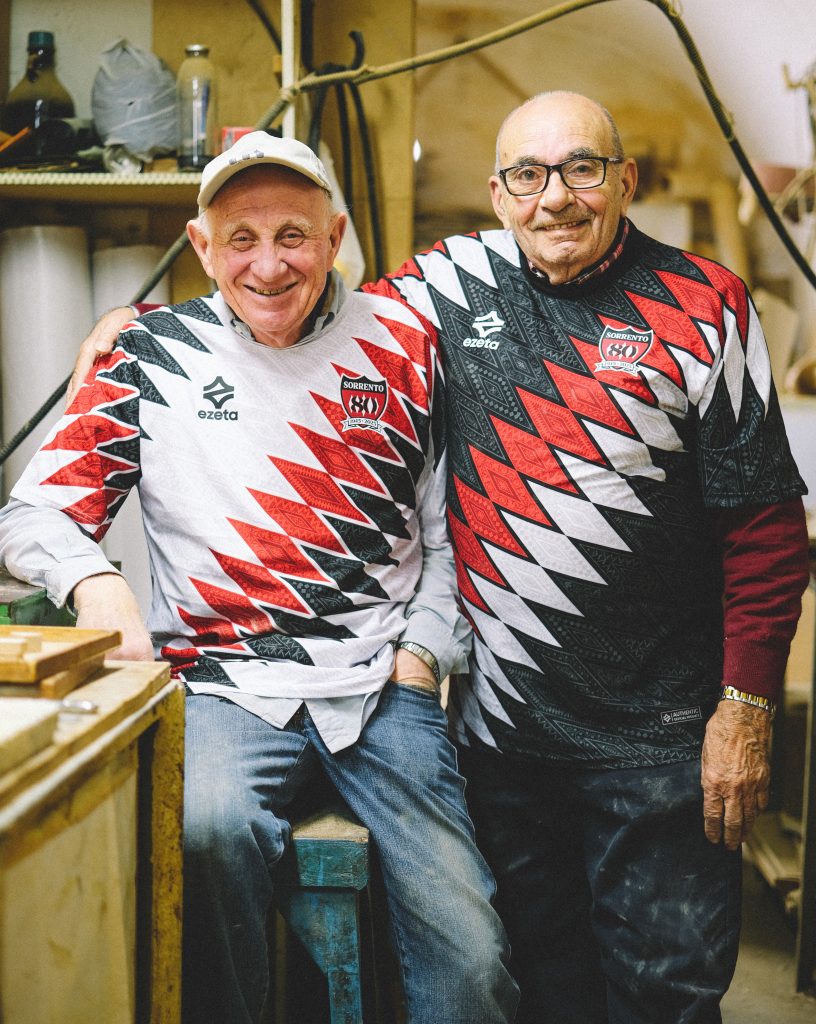
Images by Giuseppe Romano,
Kit available at: Ezeta.
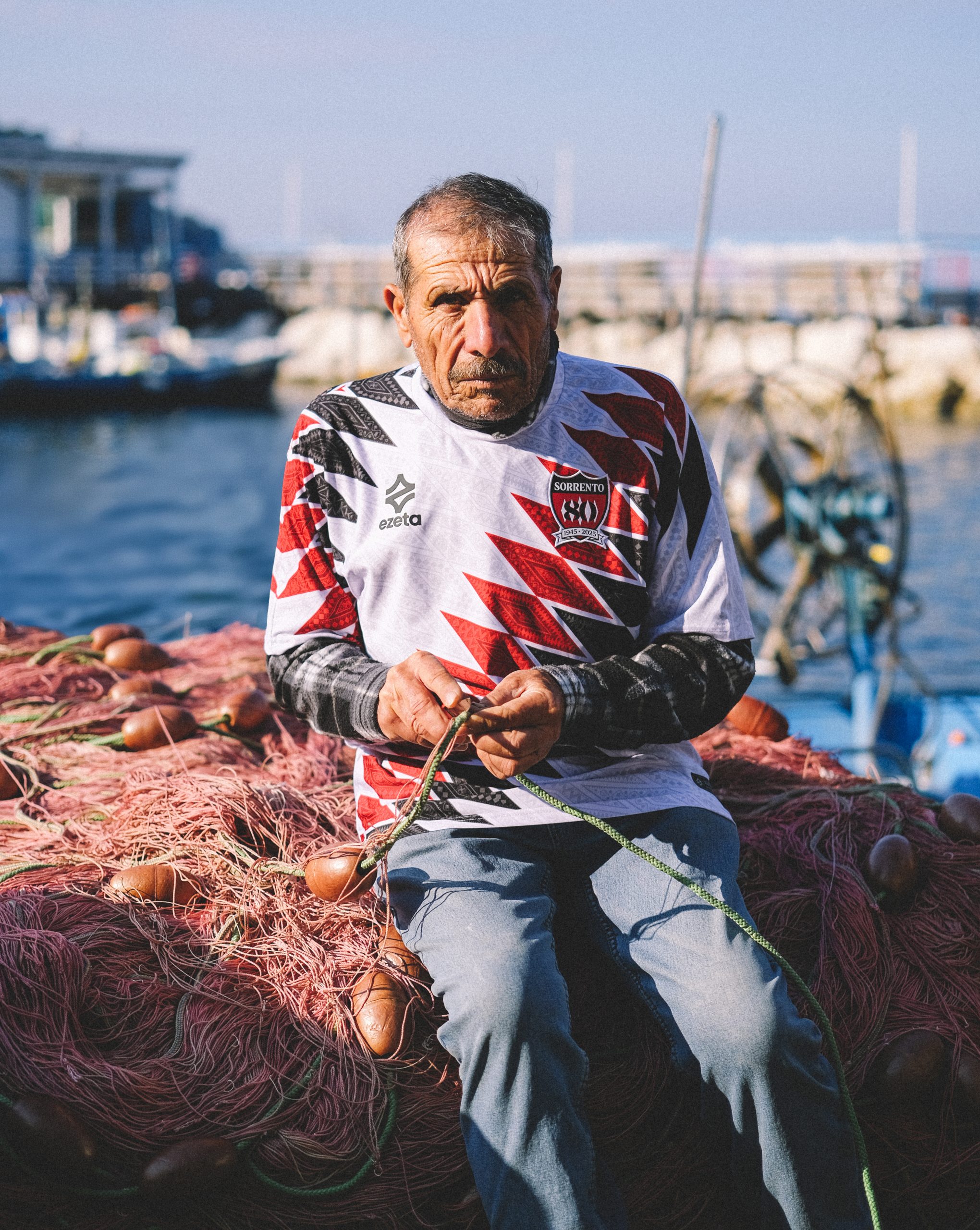
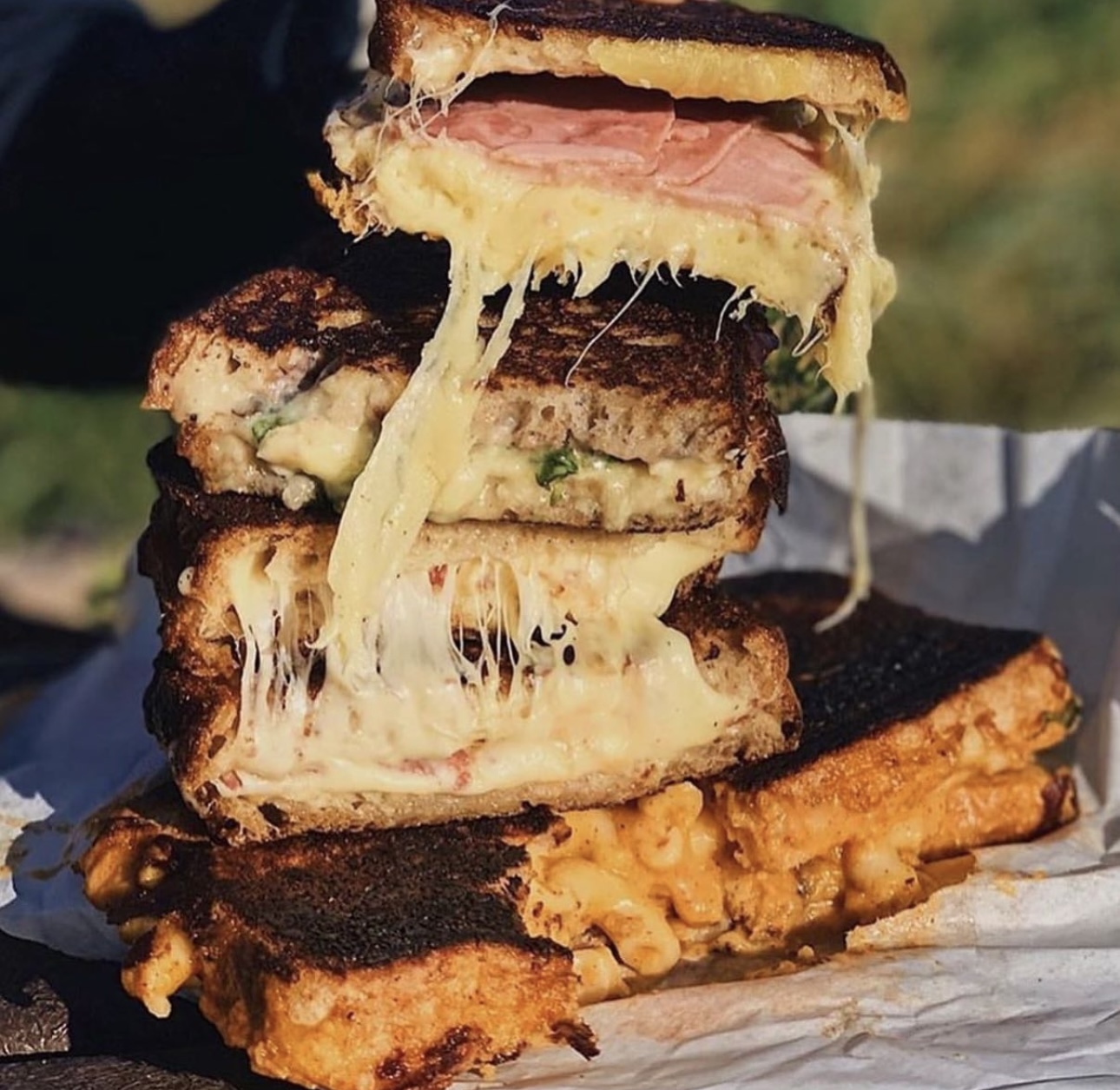
For Kate Carter-Larg, the Cheesy Toast Shack is a story of love, risk, hustling, triumph, tribulations, early mornings and late nights. It represents a dream that was worth putting everything on the line for. “We’d put all our savings into it, so failing was not an option,” Kate explains. “We hustled, we worked every day, we went to every event that was viable for us. We didn’t take on any staff until we were a few years in, we posted on social media every day, multiple times a day, and we shouted about our business and made people listen.”
Born in Dorset, in the South of England, the adventure of a lifetime would begin for Kate when she found herself travelling to Bali, in South East Asia. It was there she would meet Sam, her future husband and business partner.
“After a fleeting holiday romance, where we never thought we’d see each other again, he followed me down to Brighton (where I was living at the time). He decided he couldn’t live down there (distinct lack of surf) so got me to visit him in Scotland. I fell in love with it straight away, and pretty much decided to just not leave.
We had another year of travelling around a bit, including heading back to Bali to spend a few months of more beaches and surfing, before heading back to Scotland together with the idea of starting our own business.”
With only a small amount of savings between them, they knew that any kind of fixed cafe would be out of the question. “It just seemed so obvious, everyone loves a toastie, but not some dry, thin crappy Costa-style one. Instead, we wanted to do big, filthy, oozing with cheese-level toasties, with fillings that you don’t get just anywhere.”
With that idea, the wheels were set in motion. Scared, but with an unrelenting desire and determination to succeed, Kate and Sam put their life savings into everything and set off in search of their dream.
That dream would become a reality and take them all across the UK, to events, festivals and Glastonbury. They would be crowned Street Vendor of the Year, and earn the accolade of Scottish Street
Finalist. They would establish two sites, receiving visitors from all over the globe and go viral across social media. Renowned food critic, Jay Rayner, would give his seal of approval. Celebrities would come far and wide to taste their manchego with chorizo, red pepper and jalapeno chutney, or delight in their New Yorker made with sliced Swiss, pastrami, American mustard and sauerkraut. It would become a place that is now part of the family, with Kate, Sam and their two wonderful children.
It is a story that not even in her wildest of dreams could she have imagined. But it all happened. It really did. And it was a pleasure to sit down with Kate and talk about the journey she’s been on, her biggest challenges, being her own biggest critic and her proudest achievements.
We knew we wanted to be self-employed…we understood it’d be high risk and high stress, but we wanted to have a lifestyle where we could spend time together, and not have to answer to anyone else (we’ve always been quite headstrong and neither of us like being told what to do by someone else!)
We only had a small amount of savings between us, so we knew any kind of fixed cafe etc would be out of the question, so that immediately put us in the market for a food trailer. We just jumped on Gumtree and found a practically new trailer near Glasgow. A guy had bought it and then decided to not bother pursuing his burger van career, so we grabbed it and towed it back over to Fife.
We’d been looking at what was available street food-wise in Scotland, and the scene was starting to blow up. So many great options and traders, but no cheese toasties! It just seemed so obvious, everyone loves a toastie, but not some dry, thin crappy Costa-style one. Instead, we wanted to do big, filthy, oozing with cheese-level toasties, with fillings that you don’t get just anywhere.
Sam and I worked on the trailer, whilst getting everything else set up, and within a couple of months, we were good to go. We secured a pitch at a local beach and then would tow the trailer to events all over Scotland in between working Kingsbarns beach, to get the word out there about our brand and our business.
This did us wonders, as within our first year of trading we managed to secure a pitch at The Edinburgh Fringe Festival, where we got named the Best Place To Eat at The Fringe by The Scotsman newspaper.
Off the back of the popularity we experienced from being at such a huge event, we were in a position to apply for a pitch at the next Glastonbury Festival in Somerset. After doing this, our following took a massive jump, and we found we had people reaching out to us from all over the UK, saying they’d tried us and couldn’t stop thinking about our toasties.
During this time we were also doing every other event: street food markets, food competitions, music festivals, weddings….anything we could get our hands on. This eventually led to us then being offered the lease on our now main hub, in St Andrews. So at this point, we had our Kingsbarns pitch, our St Andrews kiosk, as well as multiple street food setups, allowing us to have 5 pitches across the Edinburgh Fringe Festival for the years running up to Covid, making us the biggest independent traders across the city for the Fringe.
Covid was a huge challenge at first. There were grants for some hospitality businesses, however, because we sublet our kiosk we didn’t pay rates, and we weren’t entitled to the first few rounds of grants. So trying to keep our heads above water really was a challenge, bearing in mind we had staff to think about, and at that stage, a 1 year old as well.
As initial lockdown measures eased, we were able to open up shop again, and thankfully, the rules dictated by the Scottish Government just so happened to mean we didn’t need to change much about our operational setup. We were always a takeout unit, from a hatch. We just needed to work with fewer staff on shift at once to keep numbers down, but it was good for us that people were allowed to go for a walk and meet a friend outdoors, as that matched the description of what people did anyway when they’d come to one of our beaches.
It did, however, have a massive impact on the events industry, meaning it was the first time since we started that we weren’t doing any street food at all, or weddings. This obviously meant the income of the business took a massive hit, which was certainly a negative. However, in hindsight, it made us re-evaluate how lucky we were to still have the pitches we were able to trade from.
When the grants that we did qualify for eventually came out, we used that money to invest in the business, by upgrading our equipment. We bought a decent coffee machine, a soft-serve ice cream machine, and high-quality grills. We felt if we could get our products out at a much faster speed and even better quality, then we were utilising what we could, given the restrictions put upon us by the pandemic. And just to make things that little bit extra stressful, we decided it was a good time to have our second baby.
Our biggest achievement would have to be the Glastonbury Festival. We loaded up our campervan and towed our trailer all the way from Scotland. We were located at Worthy View which is the “posh” campsite at the top of the farm, with the pre-erected tents (not that we were allowed to stay in those).
We were only allowed the bare minimum of staff passes (the cost of a ticket per staff member is factored into your pitch fee so we couldn’t afford many). We got a few friends to come down with us to work, thinking we’d get to spend a decent chunk of the festival watching music and enjoying the festival…how wrong we were! We were mobbed from the minute we opened the hatch in the morning, doing breakfast toasties to the hungover masses, all the way through the day, with a small window where it quietened off when the headlining acts were on, and then went crazy busy again through to the early hours. We came back to Scotland exhausted but with an amazing feeling of pride and achievement.
Another of those pinch-me moments was when Jay Rayner, the famous food critic who writes for The Guardian / The Observer, came to visit us. He left a glowing review and then featured us in the Guardian’s best-value places to eat around the coast of the
Abi, who’s our manager at the St Andrews shop actually asked me the other day if I ever think how wild it is that people drive so far to come to our shack and hold it in such high regard. And that this is all for something that we have created. It really made me stop and think how cool that is. We’re so well received, and people really do make huge trips just to come and try our food. It’s very humbling, although I do still find myself being my biggest critic. If I know a famous person is coming down, I panic, and worry that they’ll just think “What’s all the fuss about?” However, that has not actually happened yet!
We love how, generally, everything is received really well on social media. We know we post a lot, but it’s paid off. Every single day we get at least one customer coming down to the hatch, to say they’ve come because they’ve seen our silly/cheesy videos online and it’s made them want to visit. We get the occasional troll which always blows my mind, but I just need to remind myself that our socials are free marketing, and it’s obviously working, because we get customers and followers from all over the world. Just this week alone, I’ve posted t-shirts and hoodies to New York, and Philadelphia
Our followers and likes have taken a huge surge in the last year since we’ve really picked up our efforts online. We find now that simply posting a photo of a toastie doesn’t get the same levels of interaction as when we post videos, so it’s just about continuing to follow trends and posting videos, and just trying to make our page something a bit silly and fun.
I would advise anyone looking to set up their own business, to just go for it. We always get people asking us “Weren’t we scared it wouldn’t work?” Of course we were, we’d put all our savings into it, so failing was not an option.
We hustled, we worked every day, we went to every event that was viable for us. We didn’t take on any staff until we were a few years in, we posted every day, multiple times a day, and we shouted about our business and made people listen.
I honestly don’t know if I’d have it in me now to hustle as hard as we did back at the beginning, but I’ve also got 2 small children now who I love spending time with, so I couldn’t be towing trailers back from Edinburgh at 1 am, as I love that I can be present for them and be the one that does every bedtime and that I get to see them every morning.
If I’m not working, I try to start the day off by getting to the gym. A couple of years ago, after having my youngest daughter, I got into CrossFit, which I just fell in love with. I’m still not very good at it but it helps my headspace as well as my physical fitness.
Sam and I try and get out for a walk together; our favourite place being Tensmuir Forest, where we love to stop for a crepe from Salt and Pine. We may have to answer a few emails/go and film some videos for the pages, and before we know it 3 o’clock rolls around and it’s time to grab our girls from school/playgroup
If they’ve not got after-school clubs then they may ask us to take them to the skatepark to practice their skateboarding. If it’s not a school day then we try and get them for a surf at West Sands (if there is any) followed by live music at Dook and a few Aperol Spritz’ for us. Whatever we do, it’s hugely family-oriented. With 7 cousins living close by, and 3 sets of aunties and uncles, as well as Sam’s parents, we’re invariably hanging out with other Largs.
Every Christmas we have raclette on the menu, which is raclette cheese, served over garlic potatoes with charcuterie meats and dressed salad. You basically scrape the melted cheese over the potatoes, and it’s just amazing. It’s such a treat, and can’t help but make you feel festive.
For the year ahead, we want to keep concentrating on giving the best possible products to our customers. We feel that we’re on a really positive trajectory at the moment. Our team’s collective hard work is getting more and more recognised, with a greater following online and more customers coming to the shops. We want to concentrate on keeping this at a high level, and who knows, if the market is right, maybe even opening up some more locations.
With all our thanks to Kate Carter-Larg
Latest
High up in the hills of Rio de Janeiro state lies Petrópolis, a city better known for its palaces, imperial history and leafy streets than for its football. But tucked into this picture is Serrano Football Club, founded in 1915 and still playing an important role in the city today.
“Serrano is a very traditional club in the state of Rio de Janeiro,” the club says. “It is located in Petrópolis, a very important city in the state and has many notable buildings from the monarchical period in Brazil. Founded in 1915, Serrano was well known in the city as a popular club that attracted all types of people to its parties and social events. We started in amateurism and won two regional tournaments in 1925 and 1945. What makes Serrano so special is the fact that it is very close to the local community, and it is a club that lives in the hearts of every resident of Petrópolis.”
That closeness is perhaps what has kept Serrano relevant for more than a century. While other clubs chase television rights and global attention, Serrano remains firmly anchored in place: a team that still matters because it belongs to the people around it.

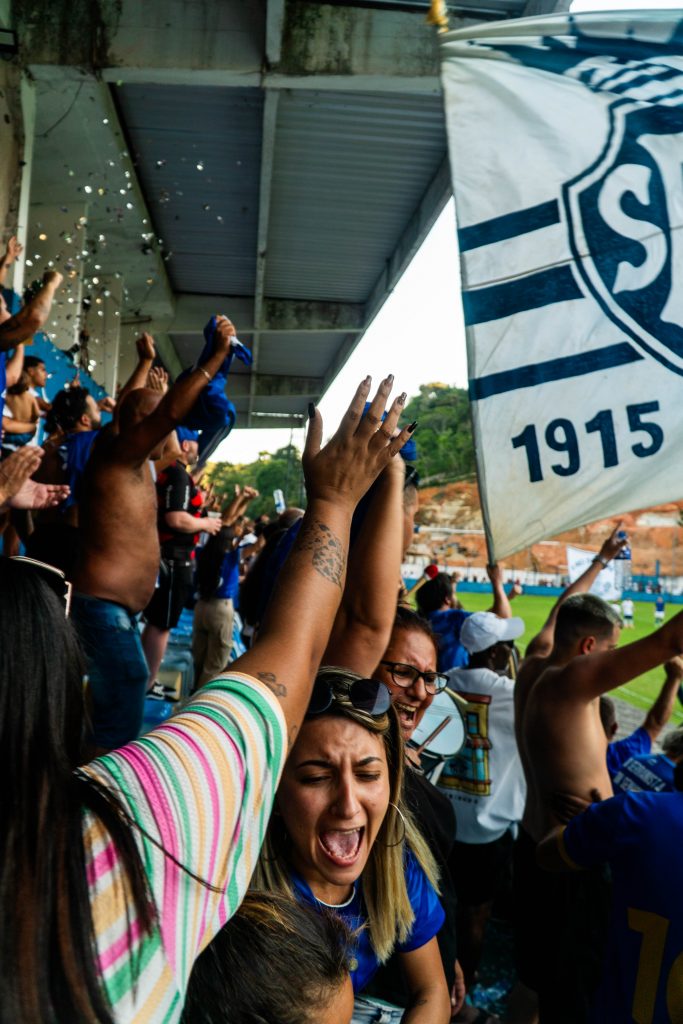
The Garrincha Connection
The club’s most famous contribution to the wider football world is impossible to ignore.
“Regarding Garrincha, we are immensely proud,” they say. “He is one of the greatest players of all time, and his career began at our beloved club. We are very happy to be able to help in the emergence of this mythical figure for the sport.”
For a club like Serrano, this link is priceless. Garrincha’s genius belonged to the world, but for Petrópolis, his first steps belong to them.




The Joy of Football in Rio
Football in Rio carries its own atmosphere, a blend of ritual, noise and pleasure. The club describe it simply:
“The football culture in Rio is very special. We love our clubs and our stadiums very much. The thing we love most is being able to experience a day of joy and happiness in the stadiums. We are deeply rooted in the idea that the experience should be joyful.
“Another notable feature is always having a beer in the stadium, and there always has to be music coming from the fans, especially samba.”
It’s a reminder that matchdays are about more than just results. They are about moments that last, habits that repeat, and the comfort of knowing that the same voices, the same songs, the same beers will be there next time too.
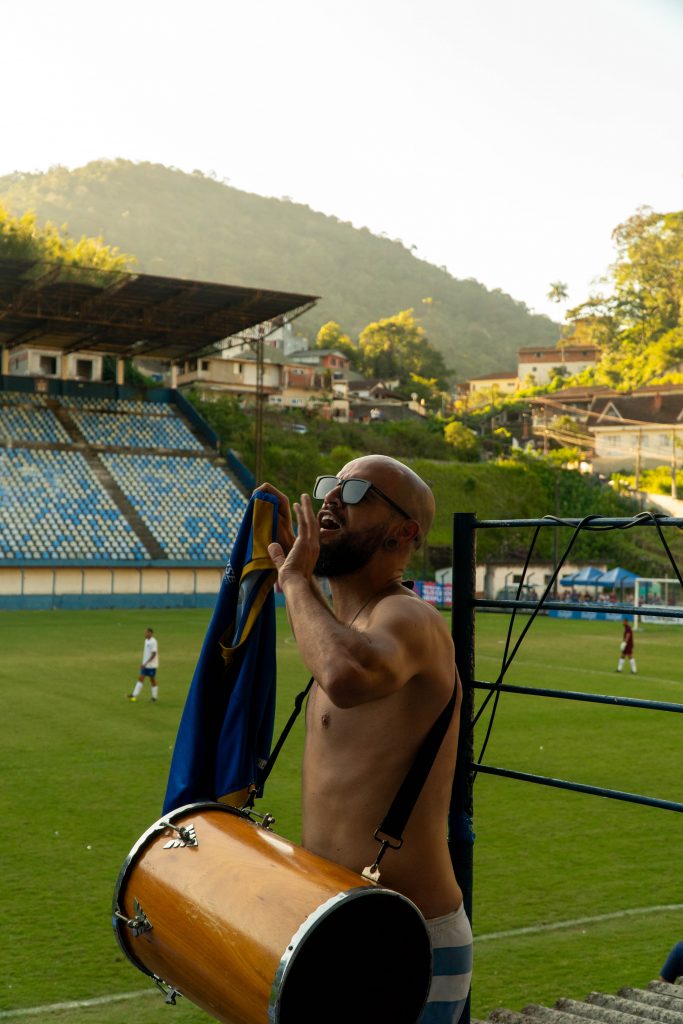

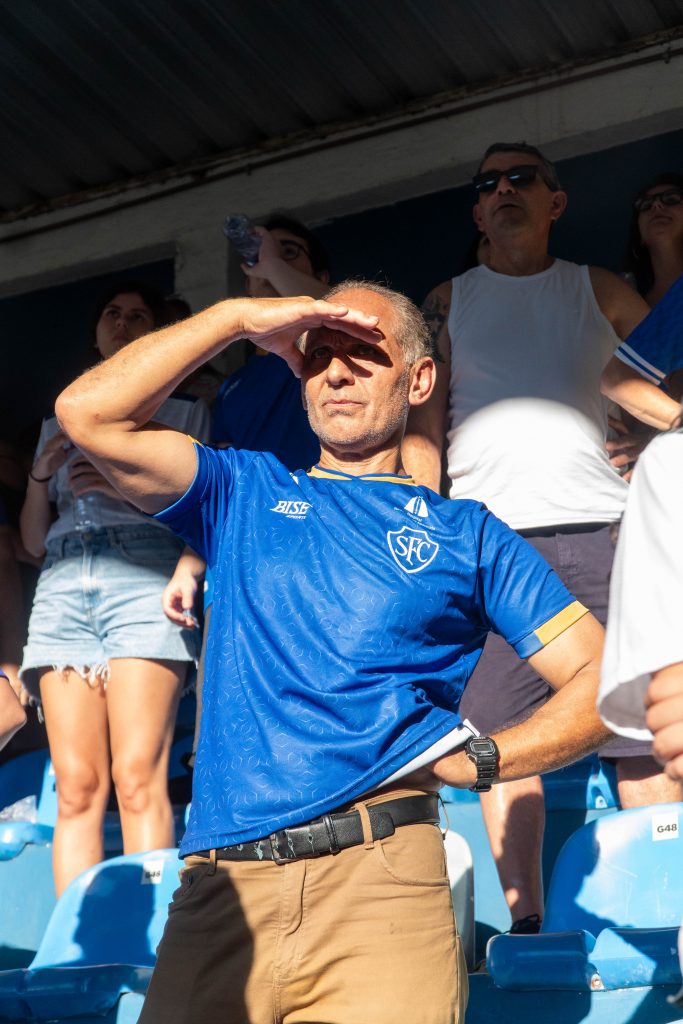
Nights at Atílio
Every club has its ground, and for Serrano, it is Estádio Atílio Marotti.
“About Atílio, he is a magical stadium. It was there that we beat Flamengo, one of the biggest clubs in Brazil and the world. It was a very special night, we won 1-0 against the team led by Zico, who would go on to become world champions.
“Atílio is our home, it is a very cosy stadium that welcomes everyone equally. We always have a loyal audience of different ages.”
The story of that night against Flamengo, when Serrano beat one of Brazil’s giants, still lingers in the stands. It is these moments—a famous win, a shared celebration, a memory passed down—that sustain smaller clubs and keep them alive.
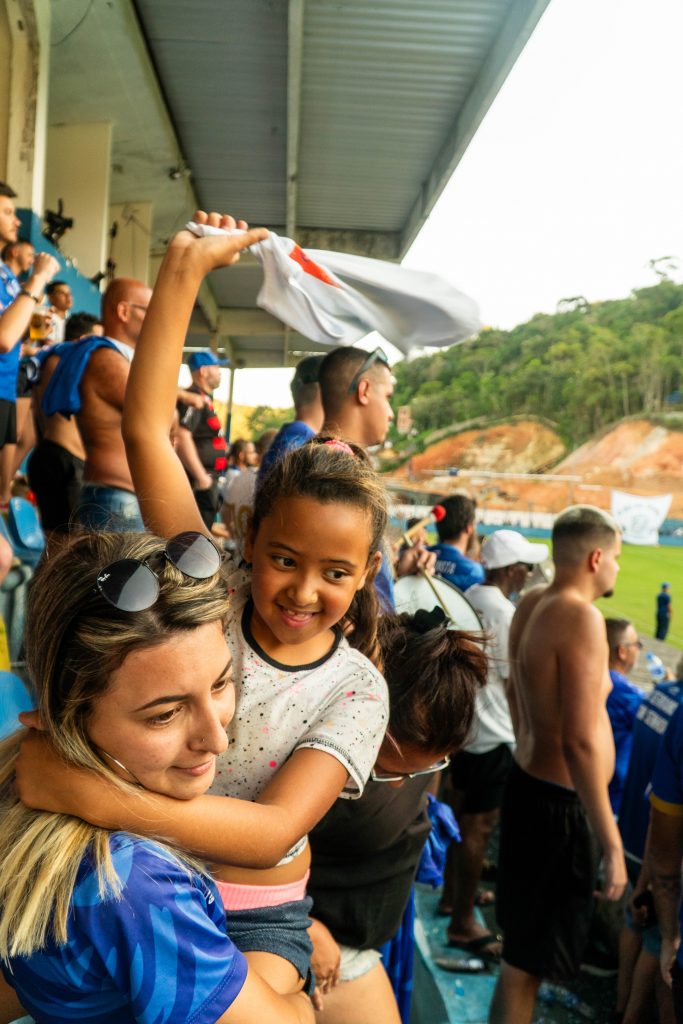


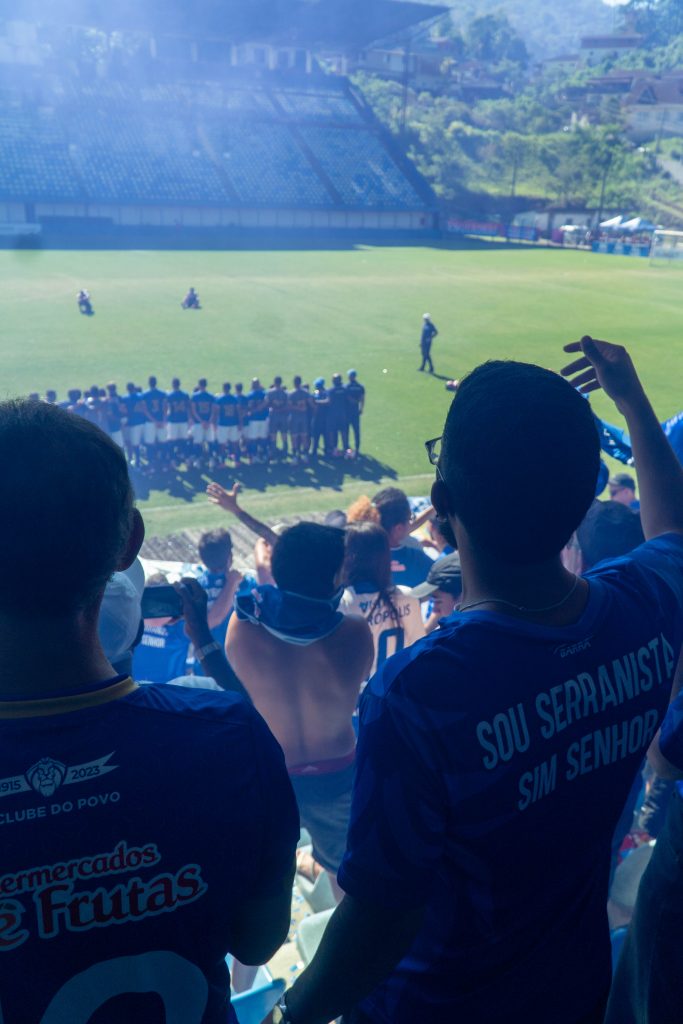
26 Years Later
This was one of those seasons. The kind you don’t forget, the kind that gets retold in bars, on terraces, and one day to kids wearing shirts a few sizes too big. After 26 long years, Serrano are champions again, lifting the Campeonato Carioca Série B1 and bringing silverware back to Petrópolis at last.
It wasn’t flashy. It wasn’t easy. But it was relentless. Serrano closed the season with a nine-game unbeaten run, finding a way when it mattered most. That stretch included two tight, hard-fought 1–0 wins in the semifinals against São Cristóvão, a club woven into Brazilian football folklore as the starting point of Ronaldo Fenômeno’s career.
The final followed the same script: composed, disciplined, and full of belief. A 2–1 victory in the first leg against Bonsucesso — another historic name, where Leônidas da Silva first kicked a ball and later gave football the bicycle kick — set the tone. A goalless draw away from home in the return leg did the rest. No drama, no chaos. Just control. The trophy was theirs.
The weight of it all made the moment heavier. Serrano’s last official title came back in 1999, also in the third tier of the Rio state league. A quarter of a century later, history finally caught up.
The numbers tell part of the story:
15 matches
8 wins, 4 draws, 3 defeats
18 goals scored, 12 conceded
And the best average attendance in the division
But this season was never just about statistics. Serrano isn’t chasing global headlines or algorithm-friendly fame. They’re chasing something closer to home — the loyalty of their city, the noise in the stands, the pride that comes with being part of Rio’s football fabric. A club that lives in memory, culture, and community. A club that once gave Garrincha his start.
This year, Serrano reminded everyone who they are.
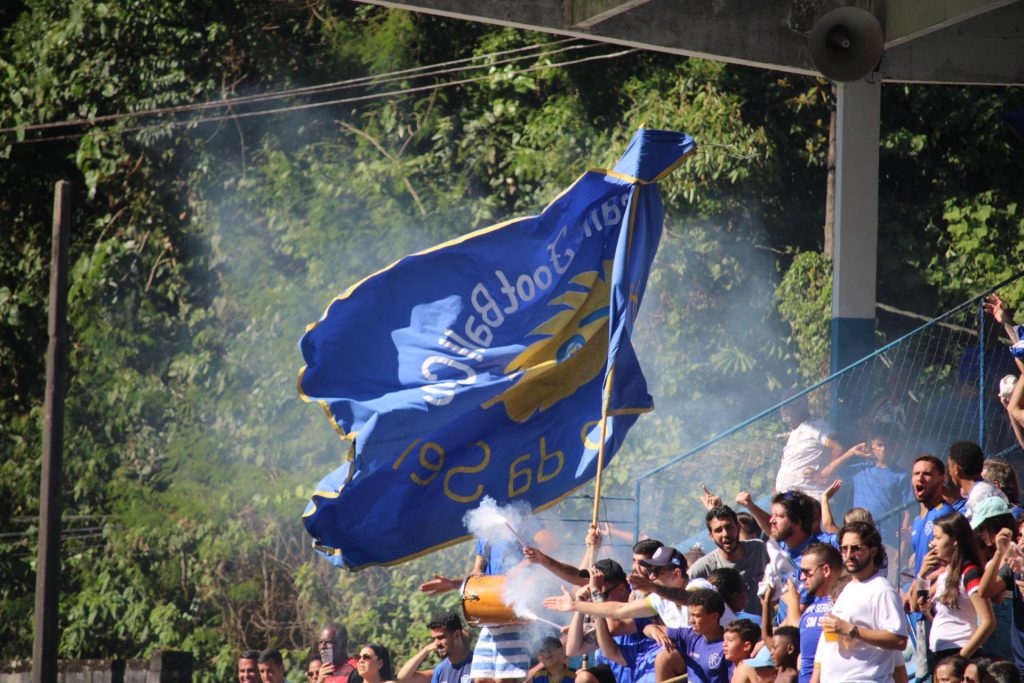


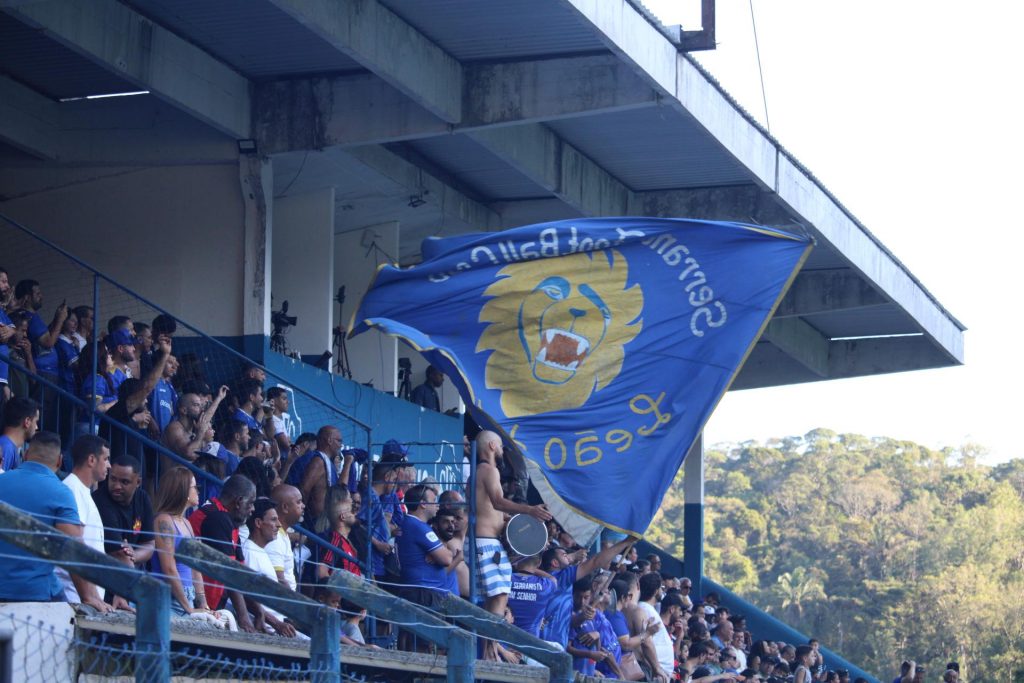
Images by Jônatas Vieira and Hugo Lage
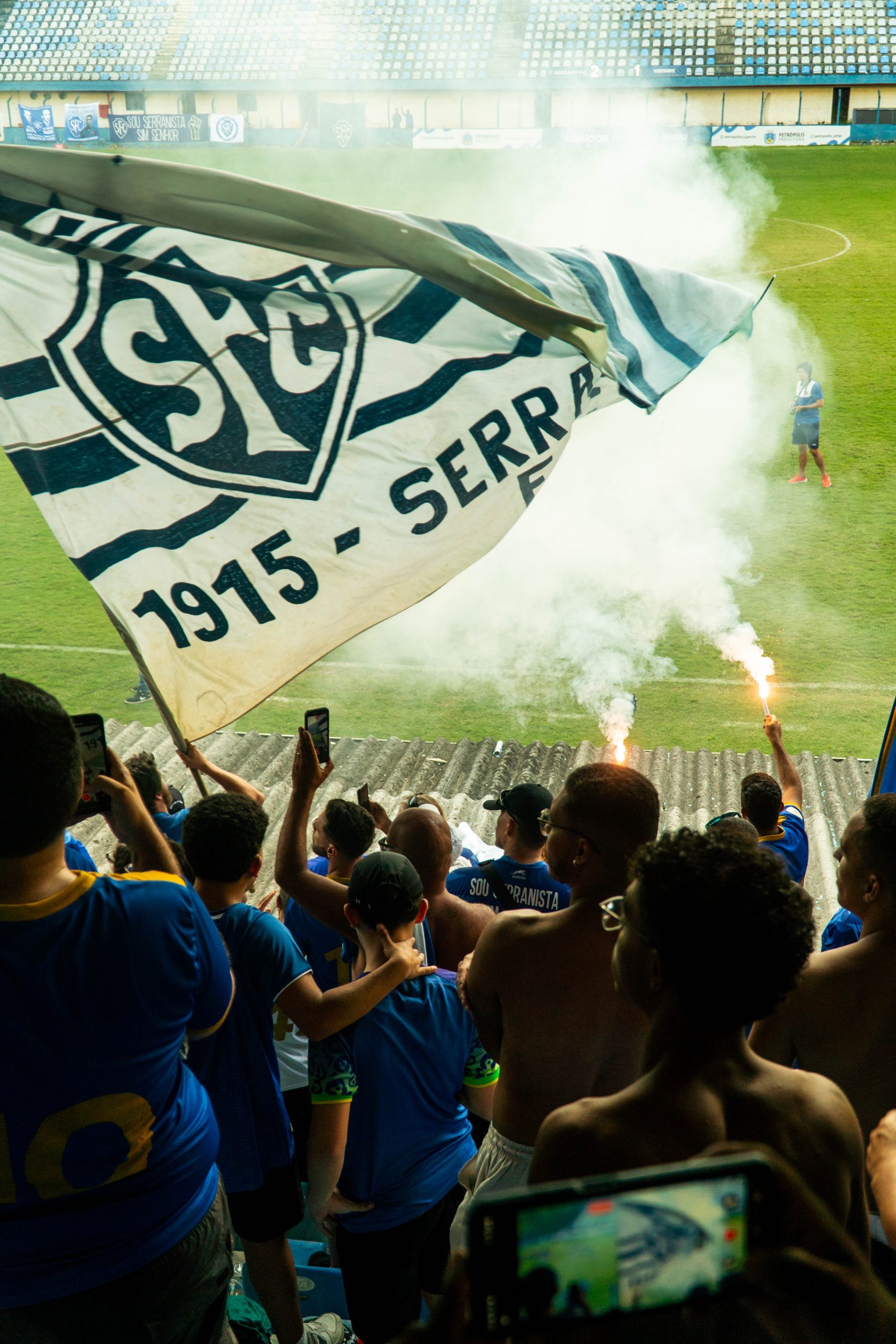
All words and images by Pedro J Caffa
“In Murphy, football is something more: it’s identity.“
Entering the town, a sign makes it unmistakably clear: you’re crossing the gateway to the heart of football. More than fifteen professional footballers were born in Murphy. It’s no myth, no exaggeration. It might be ordinary somewhere else, sure, but here there’s a twist: the town has fewer than five thousand people. And in this province that gave the world Messi and Di María, the “Cradle of the Santafesino Footballer” —by Law 14.172— is, fittingly, Murphy.
Murphy, named after an Irish landowner in the middle of the Argentine countryside, has only one football club. Just one, for everyone. Centro Recreativo Unión y Cultura is a pitch, a meeting point, and an inheritance. Mauricio Pochettino, Paulo Gazzaniga, and a long list of players came from here, carrying the town’s name farther than any map ever could.

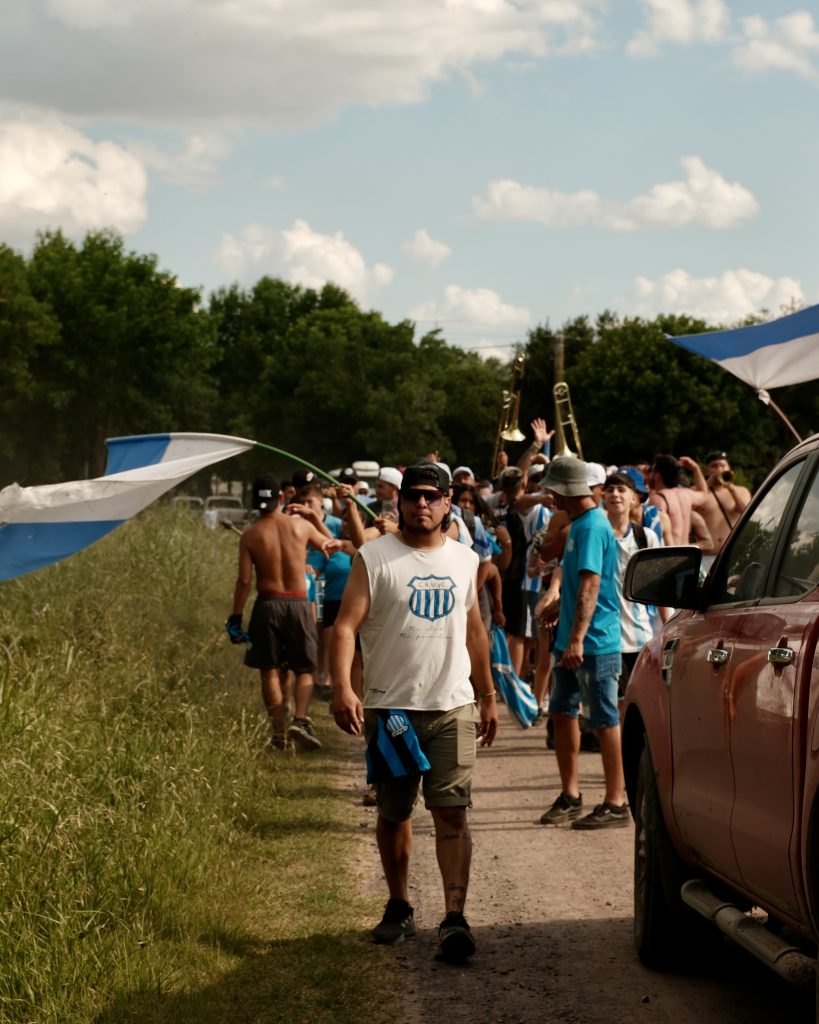
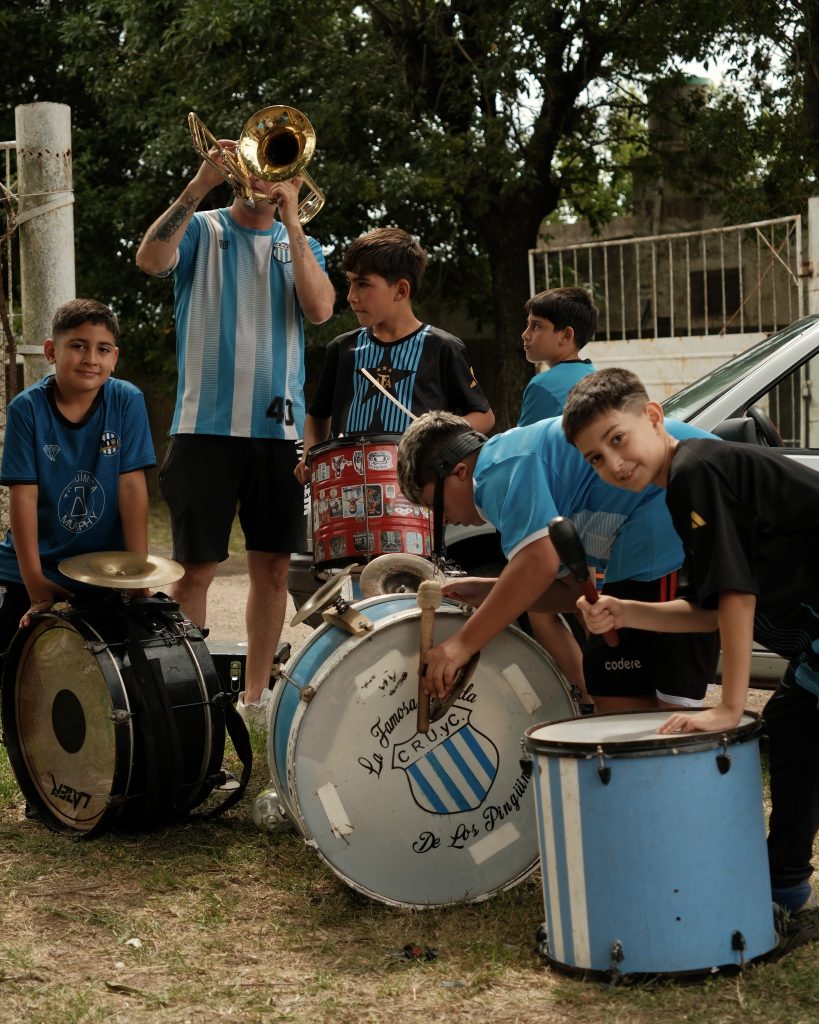
The year 2025 was special. The Centenary, and a perfect storm: a new leadership committee led by local idols; a squad and coaching staff made up almost entirely by homegrown players; and a fan base that doesn’t do things halfway, with “Los Pingüinos” leading the noise. All of them pushing together on a path that took Unión y Cultura back to the regional Liga Venadense final after eighteen long years.
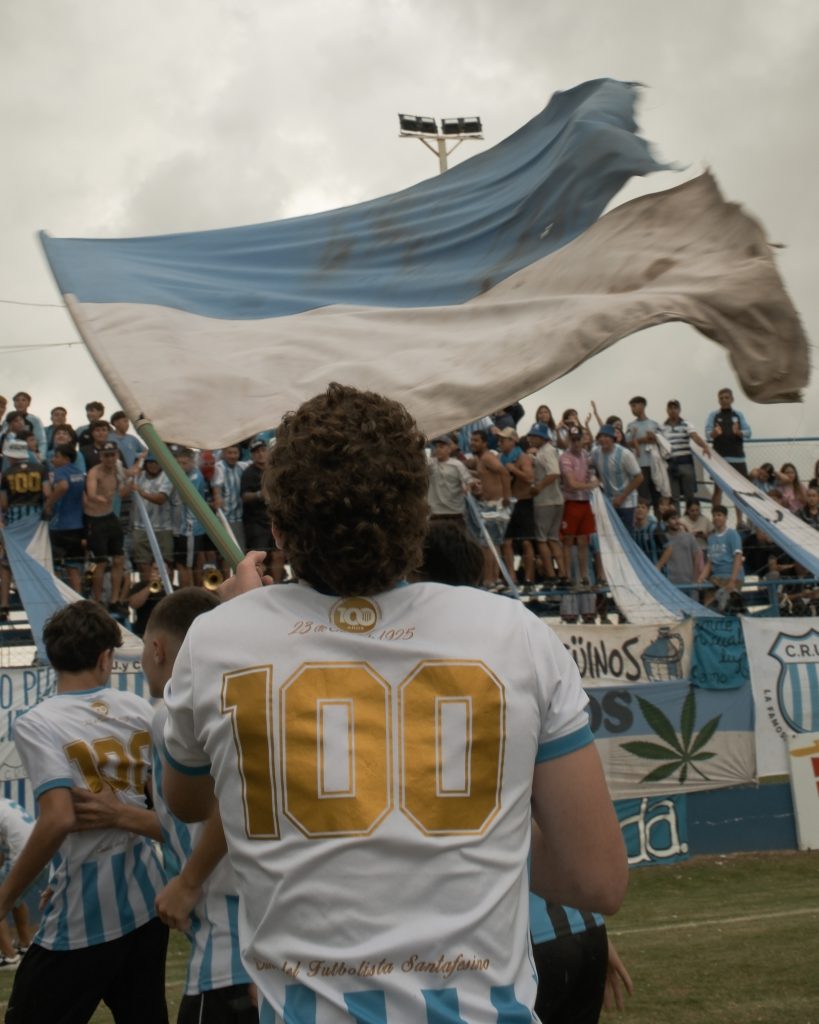

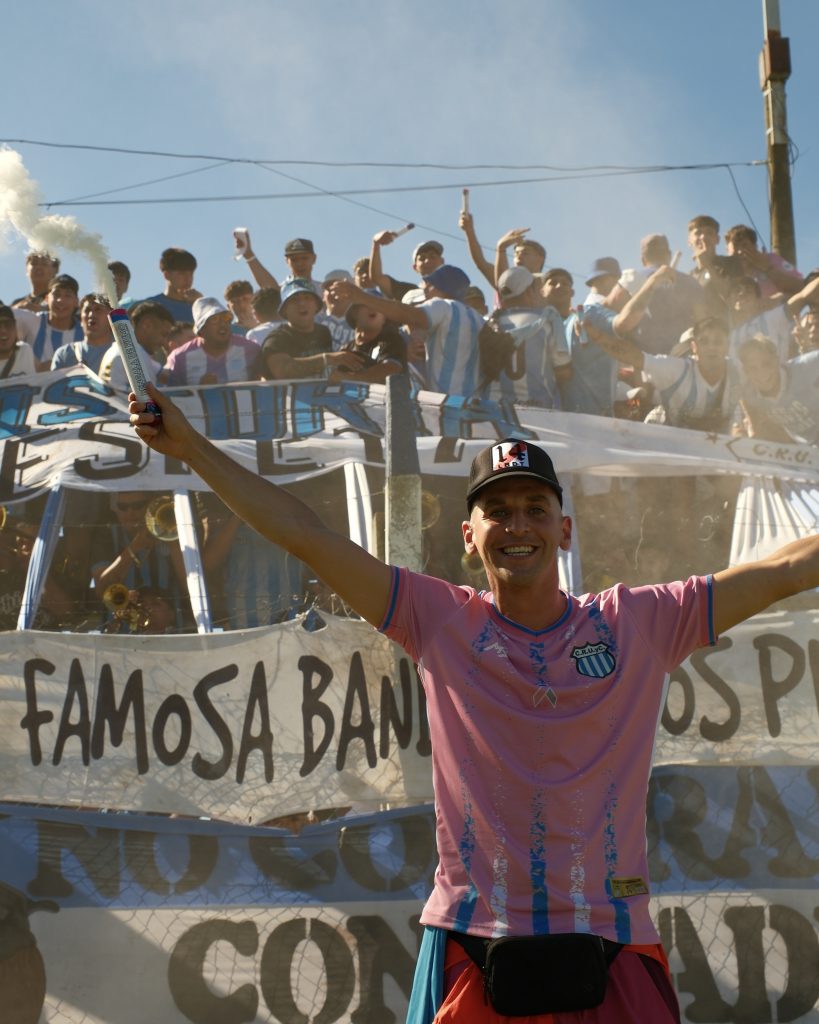

It wasn’t enough to claim the title, but that’s another story. Sometimes epic feats have nothing to do with trophies, and sometimes trophies don’t look like cups. Is there anything more powerful than watching an entire town lift a club that is its people… or a town that becomes its club?
In Argentina, football is lived in a special way, we already know that. But in Murphy, football is something more: it’s identity. To say “Murphy” is to say “Unión y Cultura.” And it’s to feel the heart swell with hope, once again.
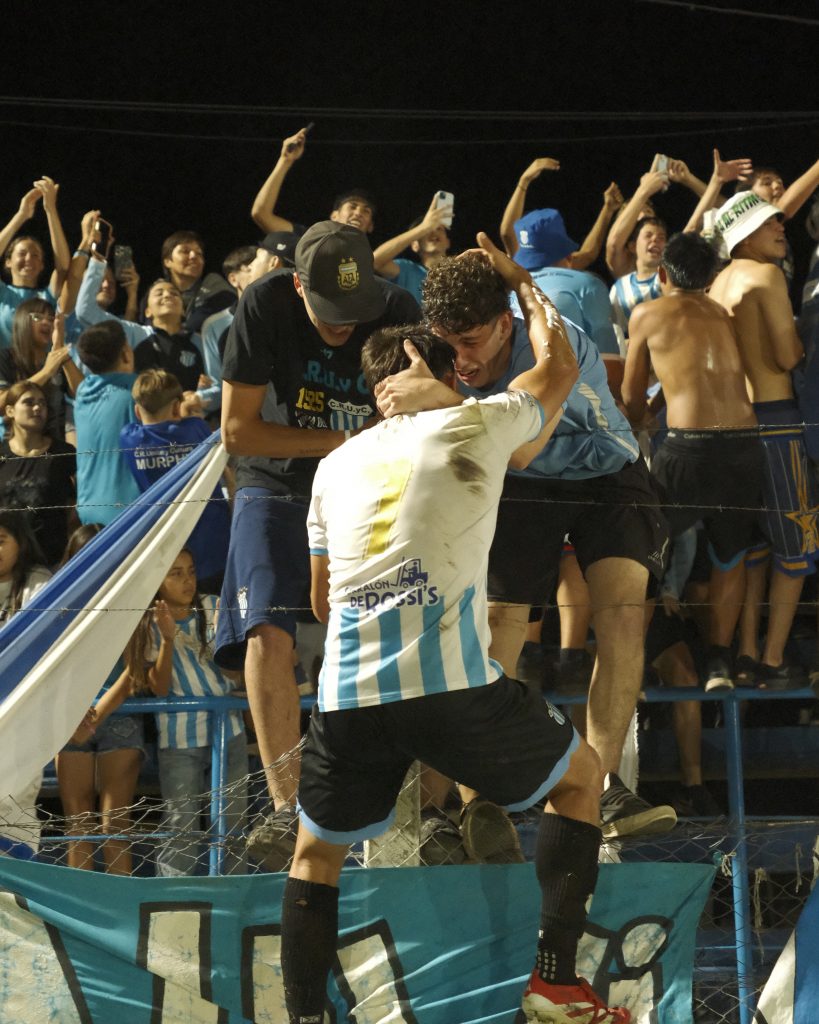
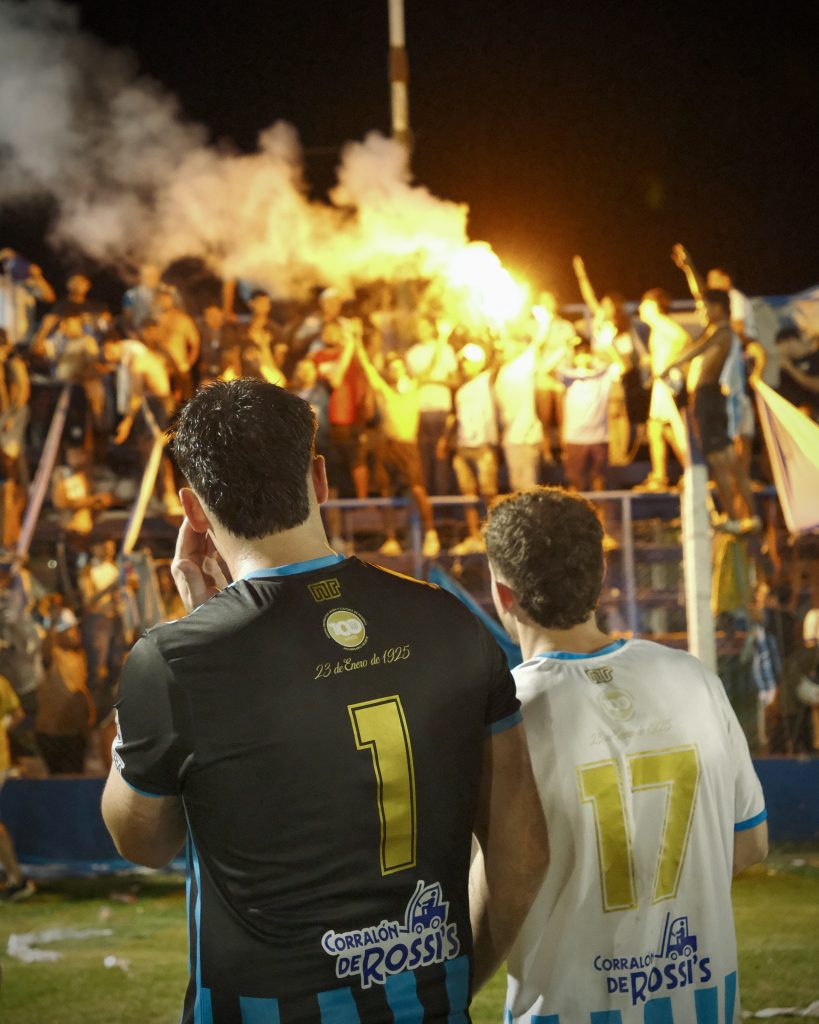
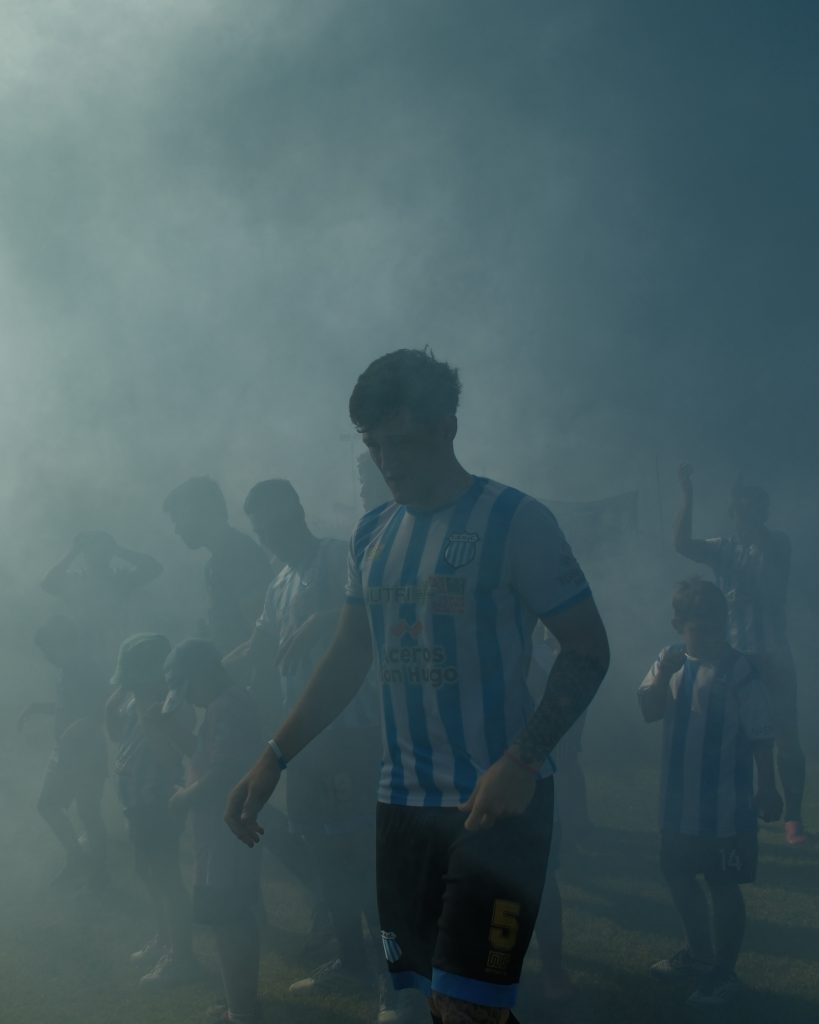

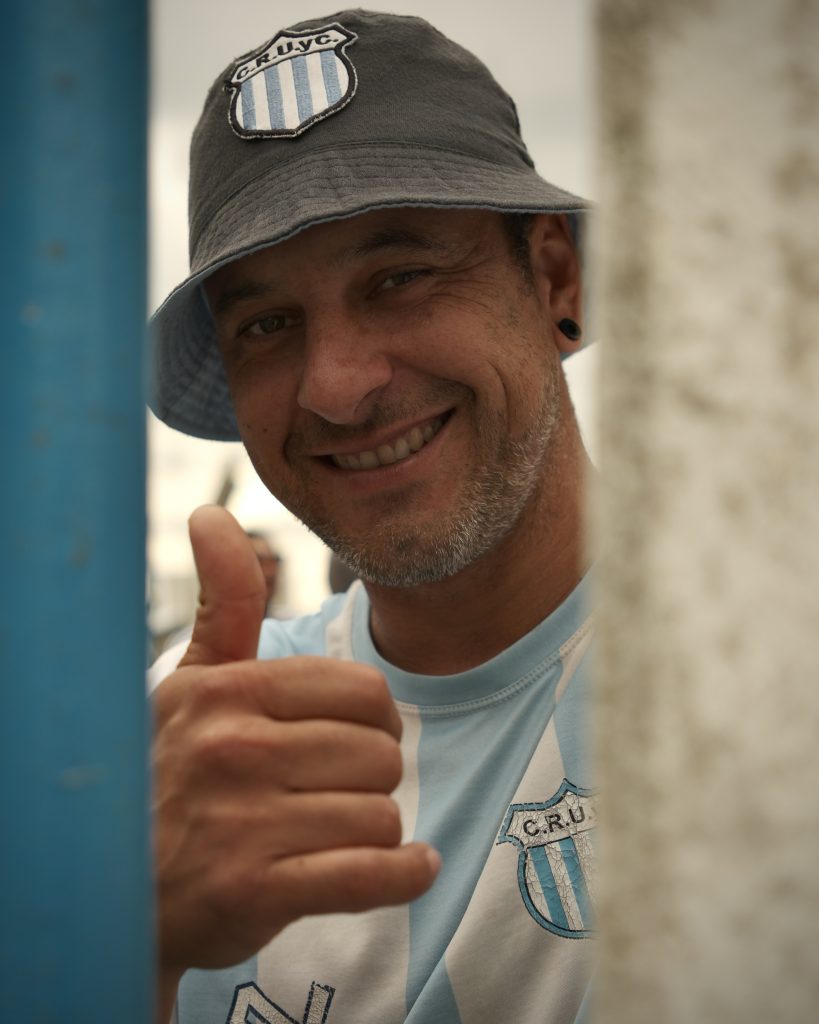
SPANISH
Entrando al pueblo, un cartel marca a fuego que estamos cruzando la puerta del corazón del fútbol. En Murphy nacieron más de quince futbolistas profesionales. No es mito ni exageración. Podría ser algo común en otros lugares, sí, pero acá hay un detalle: el pueblo tiene menos de cinco mil habitantes. Y en esta provincia que vio nacer a Messi y a Di María, la “Cuna del Futbolista Santafesino” —por ley 14.172— es, justamente, Murphy.
Murphy, nombrado así por un terrateniente irlandés en medio de la llanura pampeana, tiene un solo club de fútbol. Uno solo para todos. El Centro Recreativo Unión y Cultura es cancha, punto de encuentro y herencia. De aquí salieron Mauricio Pochettino, Paulo Gazzaniga y una larga lista de jugadores que llevaron el nombre del pueblo más lejos de lo que lo llevaría cualquier mapa.
El 2025 fue un año especial. El Centenario y una tormenta perfecta: una nueva comisión encabezada por ídolos locales; un plantel y cuerpo técnico con un noventa por ciento de jugadores del propio pueblo; y una hinchada que no entiende de medias tintas, con “Los Pingüinos” al frente. Todos empujando un camino que devolvió a Unión y Cultura a la final de la Liga Venadense después de dieciocho años.
No alcanzó para el título, pero esa es otra historia. A veces las gestas no saben de trofeos, y a veces los trofeos no tienen forma de copa. ¿Hay algo más poderoso que la ilusión de ver a un pueblo entero sosteniendo a un club que es pueblo… o a un pueblo que es club?
En Argentina el fútbol se vive de una manera especial, eso ya lo sabemos. Pero en Murphy, el fútbol es aún más: es identidad. Decir Murphy es decir Unión y Cultura. Y es sentir cómo el corazón se llena de ilusión, una vez más.
All words and images by Pedro J Caffa.
You can visit Pedro on Instagram here.
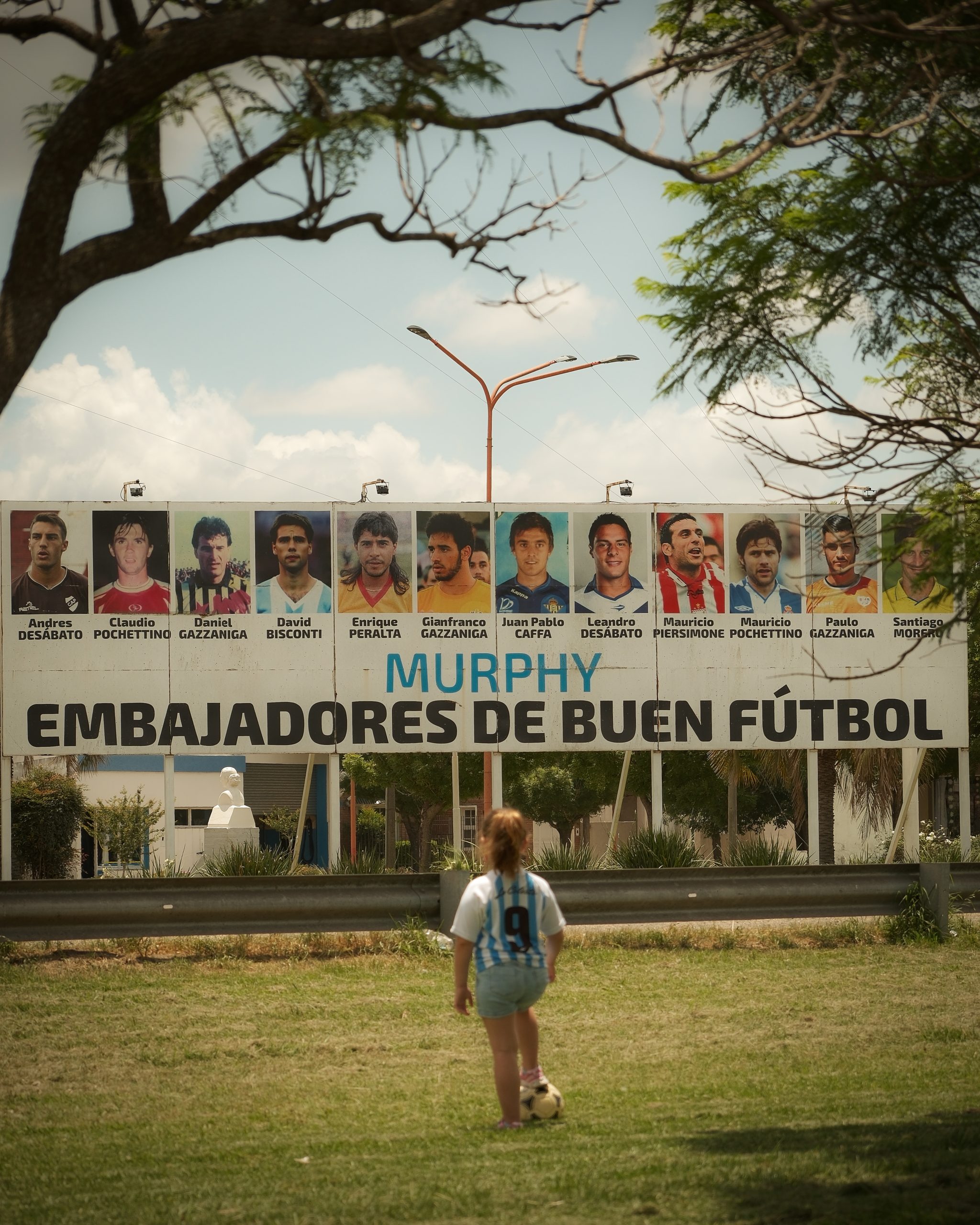
All words and images by Jonas Zöller
“Catching the last glimpses of the fading floodlights in the distance.“
It began, as so many journeys do, with football — but quickly became something else entirely.
Across South America, the game became Jonas’s entry point: a reason to wander, to ask questions, to follow floodlights into unfamiliar neighbourhoods and cities. Stadiums turned into landmarks, fixtures into excuses, and matchdays into moments of connection. What unfolded, slowly and unexpectedly, was not just a record of football grounds visited, but a diary of places, people, and passing feelings.
From vast concrete bowls to hillside stadiums carved into neighbourhoods, each stop revealed its own identity — from Chile to Argentina, and finally Brazil, where the journey draws to a close. There were nights when the noise felt endless, afternoons when the sun baked the stands into stillness, and countless conversations shared with strangers who needed no common language beyond the game. Football, in all its contradictions, opened doors — to generosity, to history, to joy, and sometimes to discomfort.
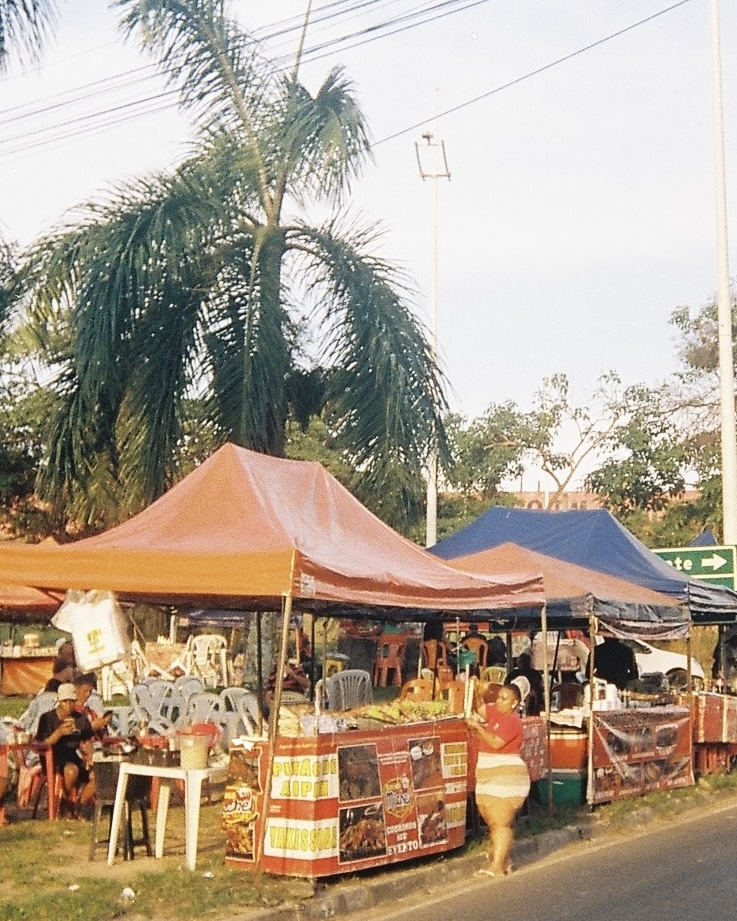
The journey was never just about romance. It carried the weight of South America’s past and present: colonial legacies etched into city centres, inequality visible long before kick-off, and the uneasy presence of modern football creeping into places that once felt untouchable. Somewhere between beauty and brutality, the game reflected the continent itself — emotional, communal, chaotic, and deeply human.
And then, almost without warning, it was coming to an end.
The final chapter unfolds in Salvador, on the last night before returning home. A day of hesitation and doubt, of resisting the pull of football altogether — before giving in one final time. One last stadium. One last set of floodlights. One last reminder of why the journey mattered in the first place.
This is not a conclusion, but a quiet landing. A moment of reflection beneath fading lights, where the journey’s many threads — football, trust, unease, connection, and belonging- briefly come together. The South American Diaries end not with a grand statement, but with a familiar feeling: standing in a stadium far from home, feeling exactly where you’re meant to be
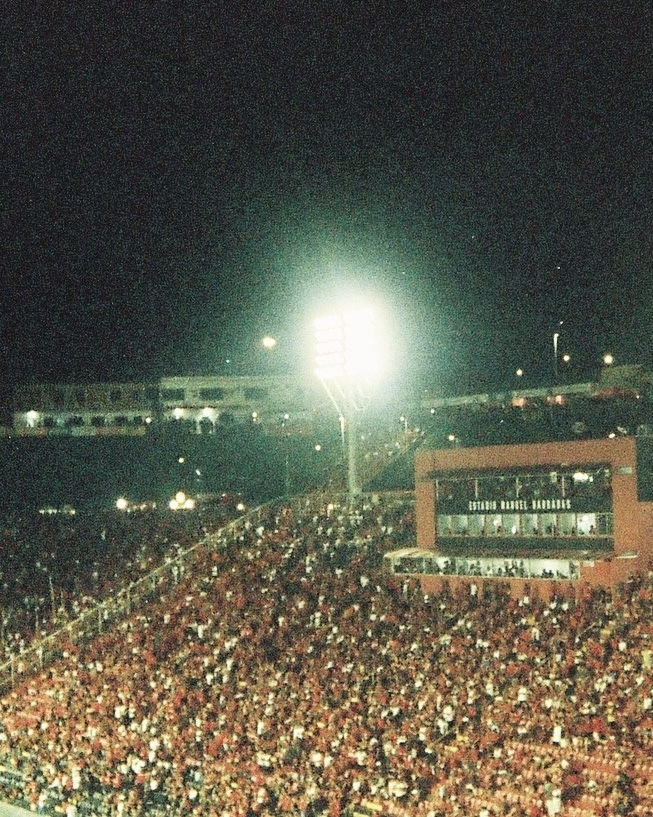
A Final Day in Salvador
Wednesday. It’s our last day in Salvador before we head back to cold Germany.
The day before, we experienced the brutal beauty of Brazil’s north one final time on Ilha de Itaparica. The island, with its white beaches and blue water, felt almost like a postcard version of everything we’d seen over the past weeks.
Maybe that trip left me a little too relaxed. Maybe it’s the many colourful colonial buildings and former mansions in Salvador that keep reminding me of the role white Europeans once played here, and how strongly that past still shapes the city today. But somehow, today, I don’t really feel like football. The match I had in mind is a bit outside the city, and once again, buying a ticket in advance isn’t possible.

Doubts, Decisions, and Modern Football
I argue with myself, weigh the pros and cons, and probably take out my phone twenty times to Google the stadium and the club. The decision finally falls in one of the souvenir shops, when I spot yet another Manchester City logo hidden among the EC Bahia merchandise. A quick search confirms what I already fear: the club is 99% owned by the City Group.
Thankfully, during my visit to Arena Fonte Nova, I didn’t notice any signs of the takeover yet — but I immediately felt connected to their city rivals, Vitória. My dislike for modern football and its multi-club ownership runs too deep.
So I decided to visit Barradão. One last match on this journey under Brazil’s floodlights. The thought is too tempting.
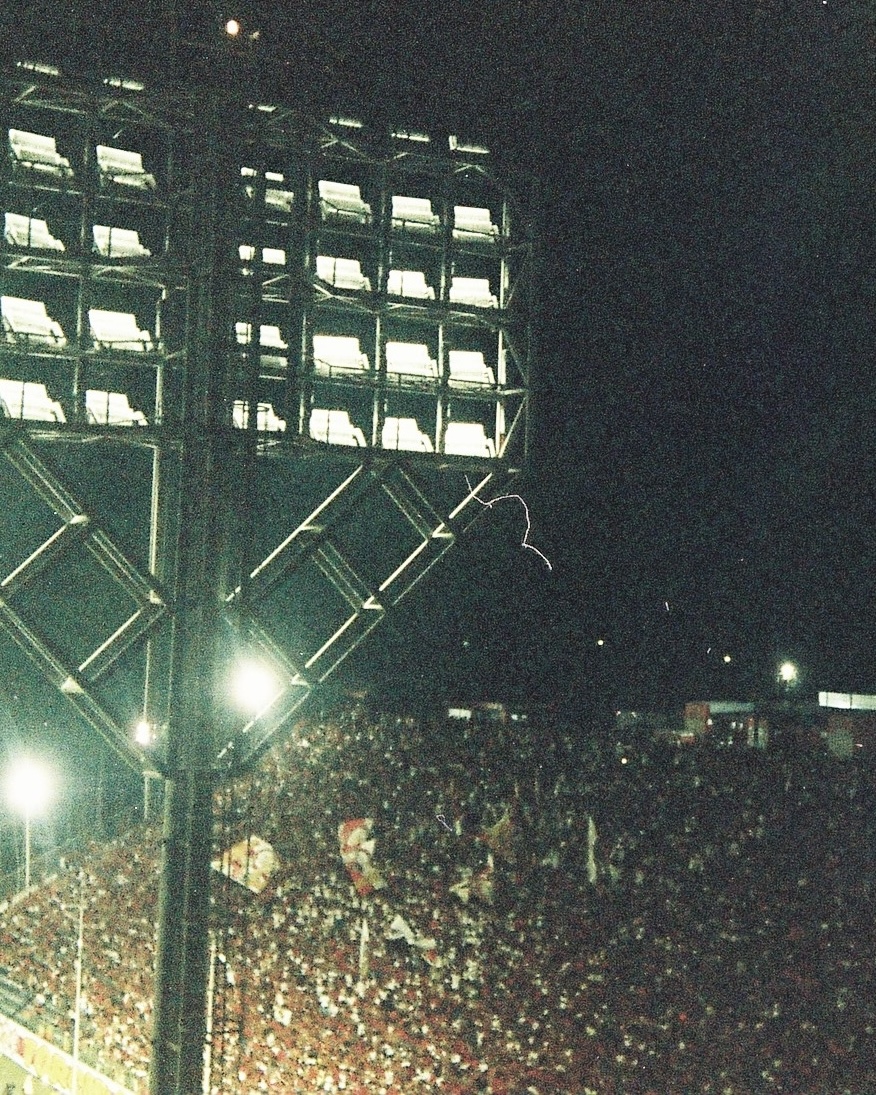
On the Way to Barradão
On the drive there, I feel uneasy at first. The stadium seems to sit right in the middle of a favela. At the same time, I’m annoyed at myself for this inner unrest. If South America has taught me anything over these weeks of football, it’s friendliness and helpfulness from complete strangers. I have no reason to feel unsafe, and I owe the people here my trust.
A little later, that trust is confirmed again at the ticket counter. As before, the process for foreigners seems absurdly complicated, but the guys and girls working there take care of me with almost touching dedication. Soon after, I’m holding my (digital) ticket.
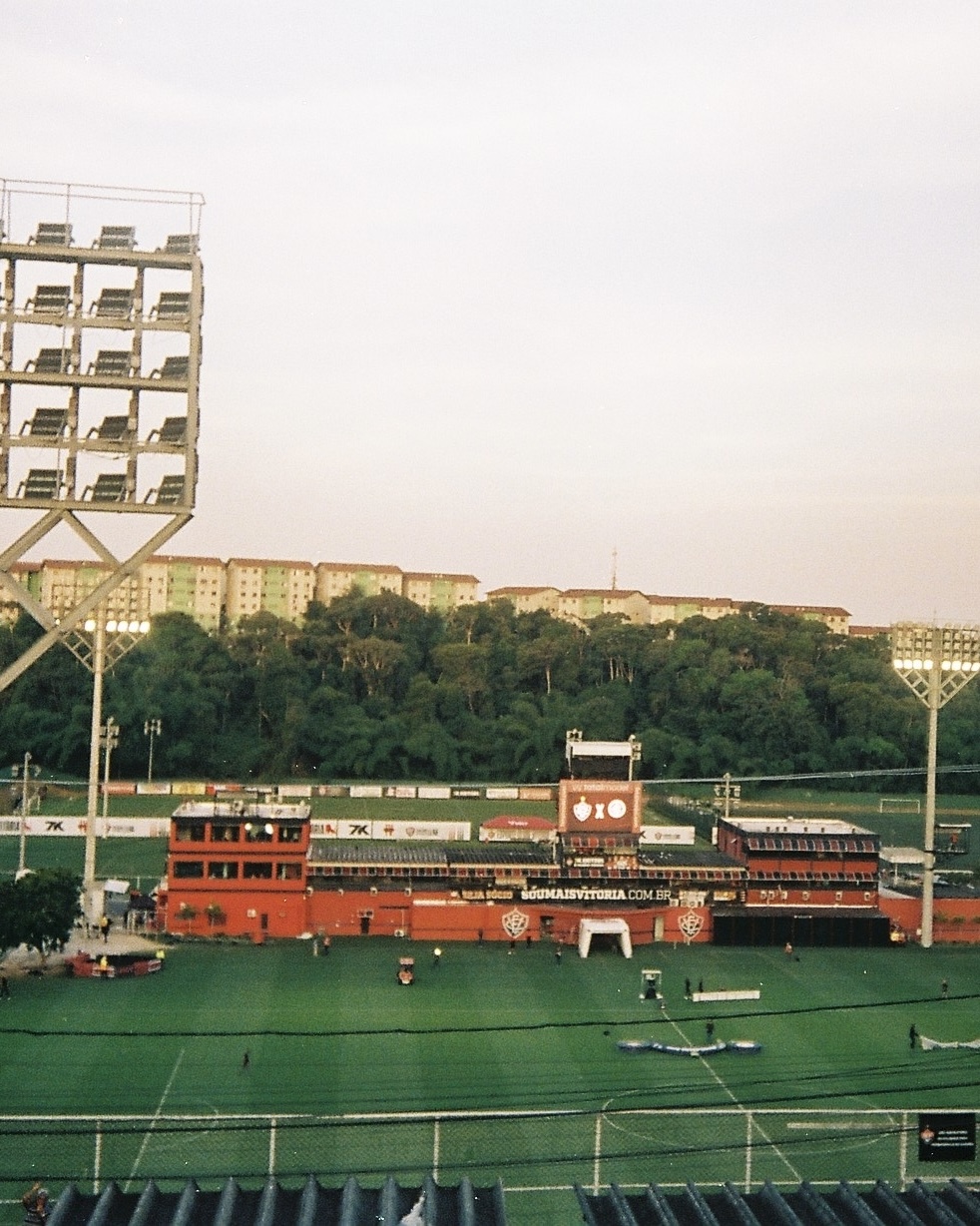
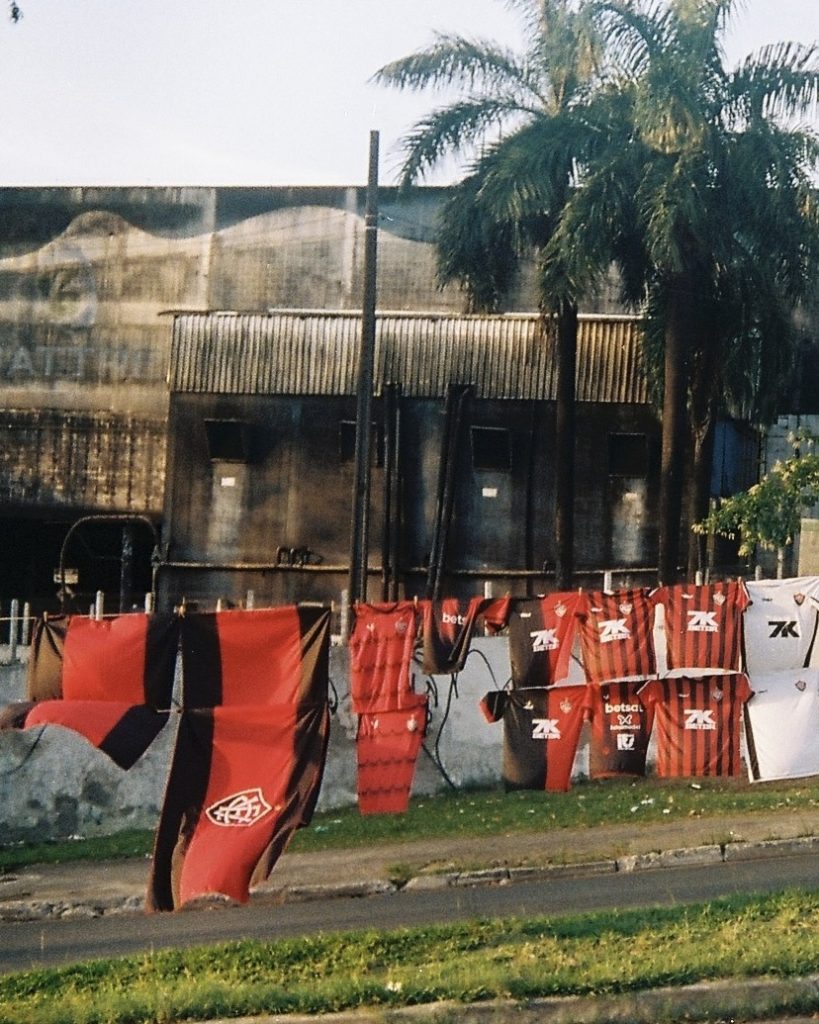

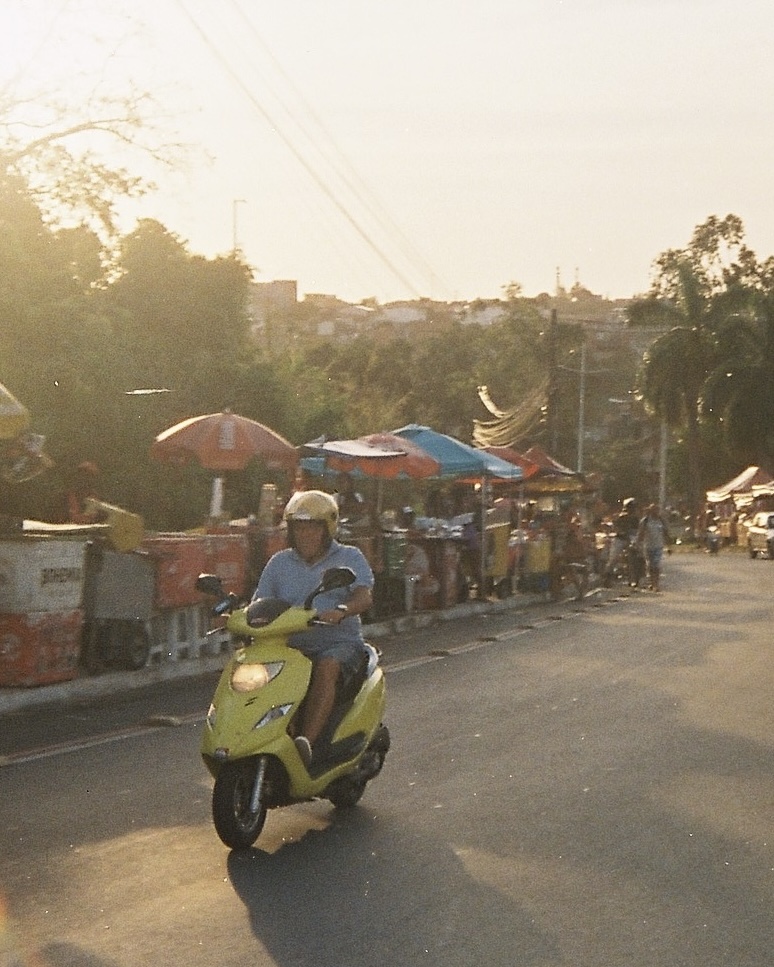
When the Stadium Reveals Itself
I take one last lap around the stadium, shoot a few photos of the street vendors, and pass through the turnstiles just as the sun begins to set. What I see when I step inside hits me within a fraction of a second — that same rush of happiness I’ve felt so many times in South American stadiums.
The pitch lies a hundred metres below me in a deep basin. Three stands are flanked by picture-book floodlights and look as if they’ve been carved directly into the surrounding hills. The stadium is still empty, so I wander around.
When I stop to take a few photos, someone approaches me quickly. Within minutes, I’m nerding out with a Vitória fan about football. I’ve had this thought a few times on this trip, but here it hits particularly hard: being 12,000 kilometres from home and sharing a passion with someone I’d never met before.

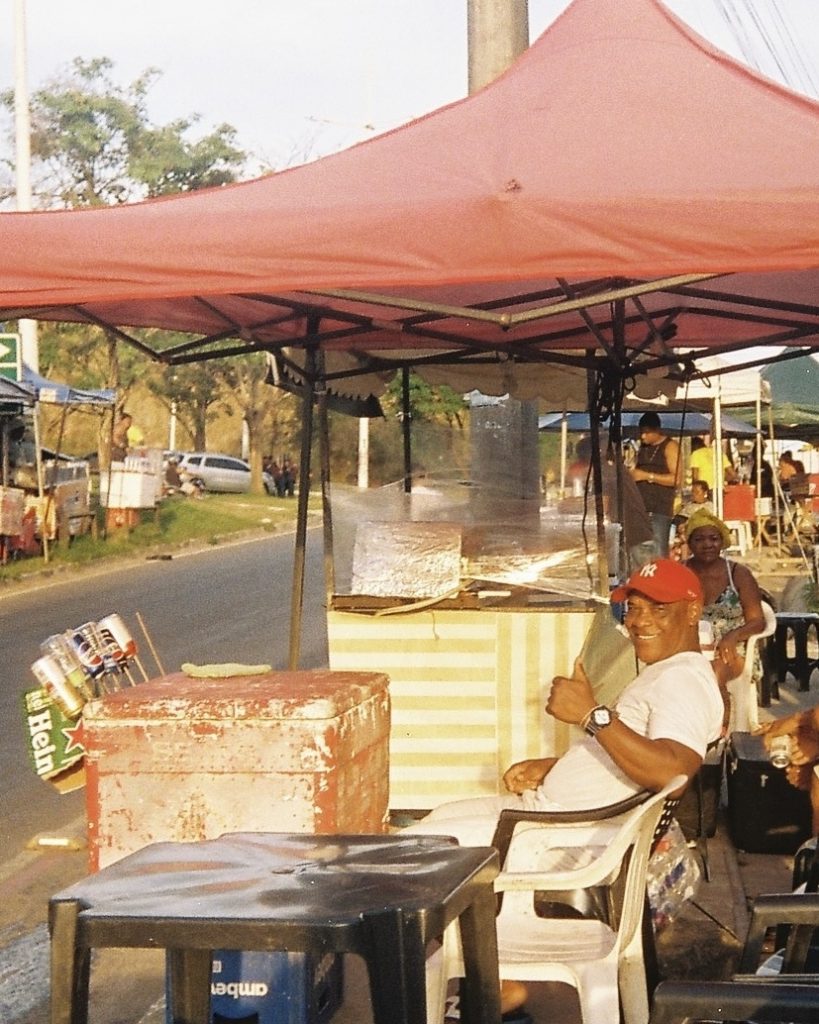
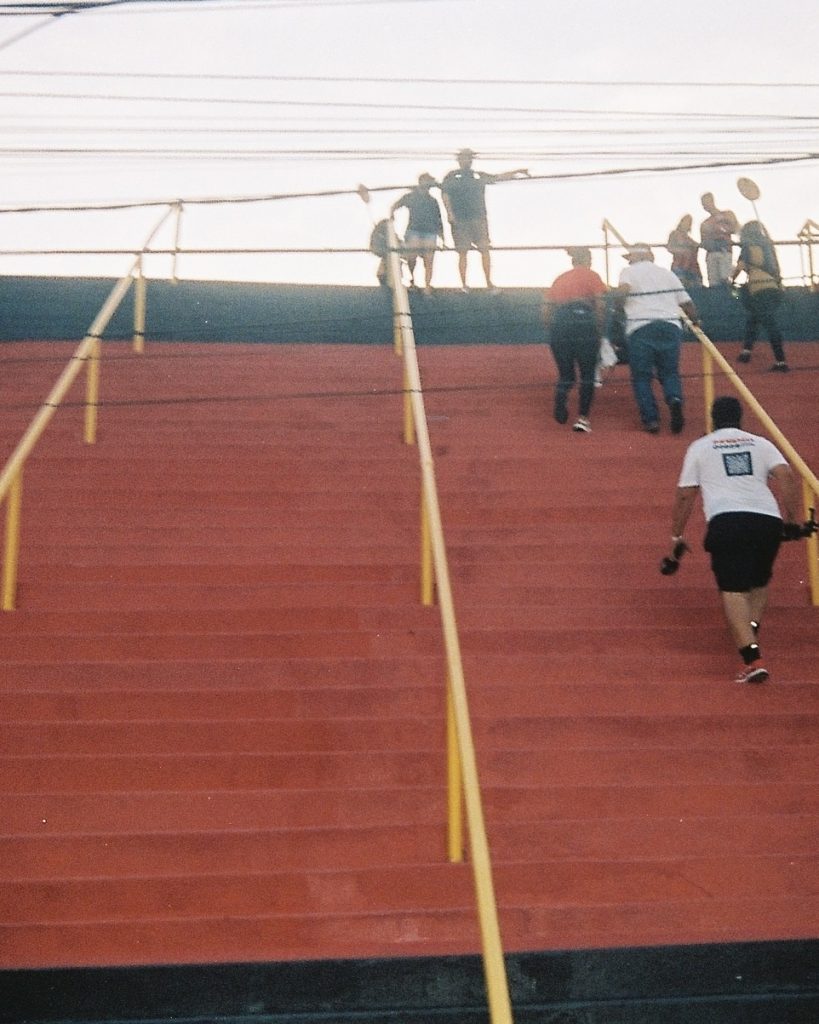
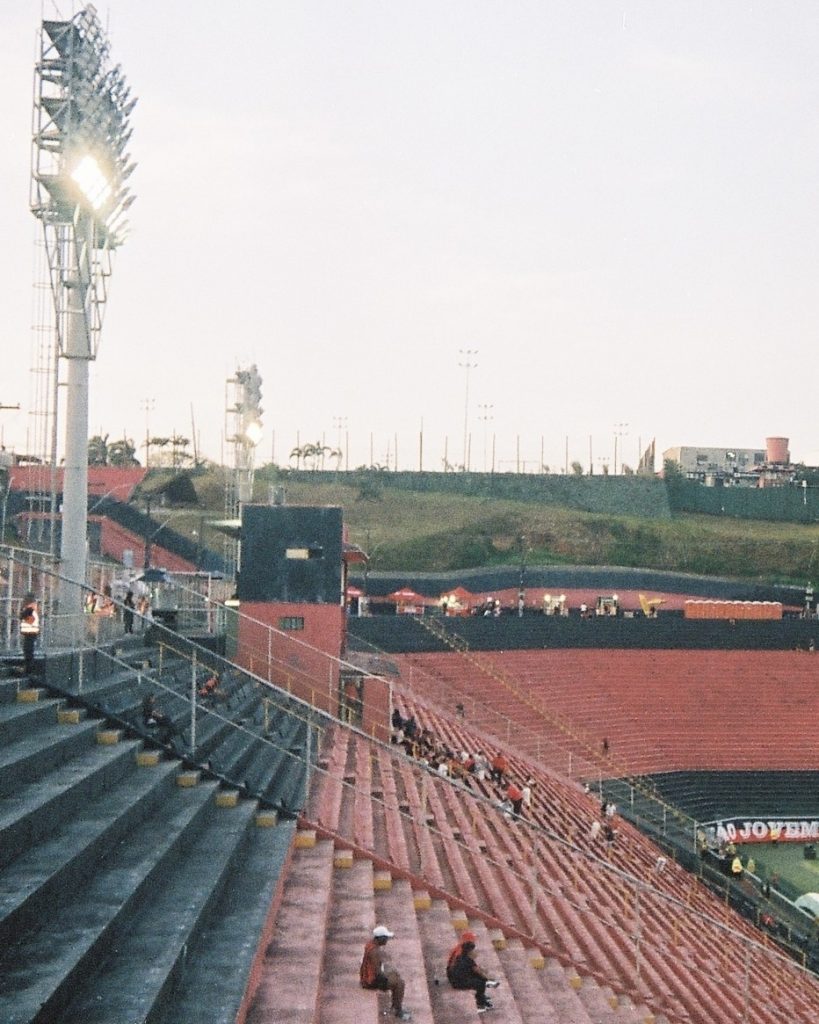
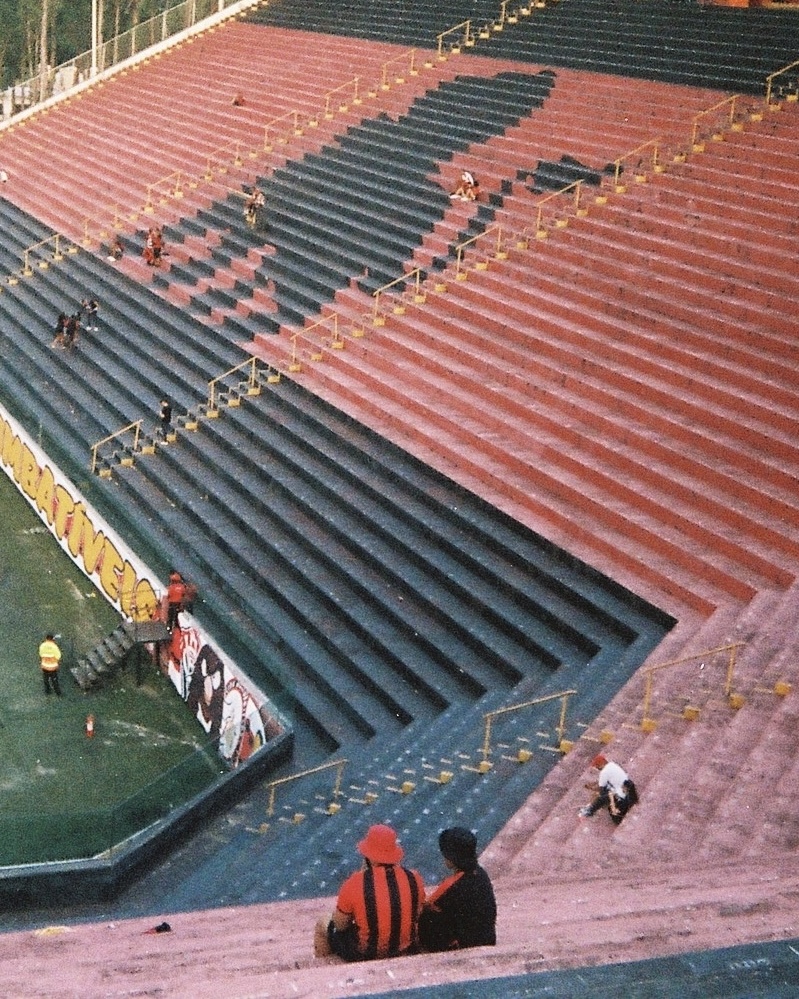
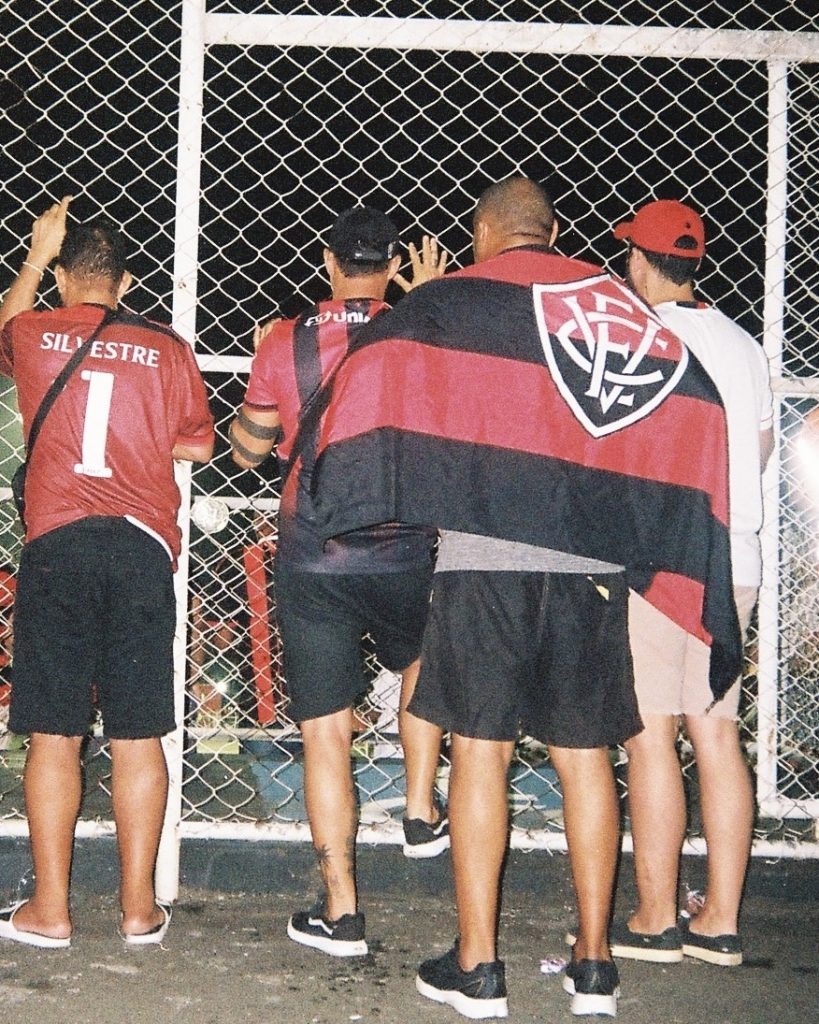
Unease in the Stands
The stadium fills slowly, but even after kick-off, the stream of people moving down the steep stairways doesn’t seem to stop. It must be the 20th or 30th minute before the stands finally reach full capacity. Even then, the place feels like it refuses to settle.
There’s constant movement between the stands and the endless food stalls, and I start to realise that the sporting situation plays a role too. Vitória are sitting in the relegation zone and playing poorly, despite desperately needing a win. The crowd grumbles and murmurs, waving arms and shaking heads with every misplaced pass.
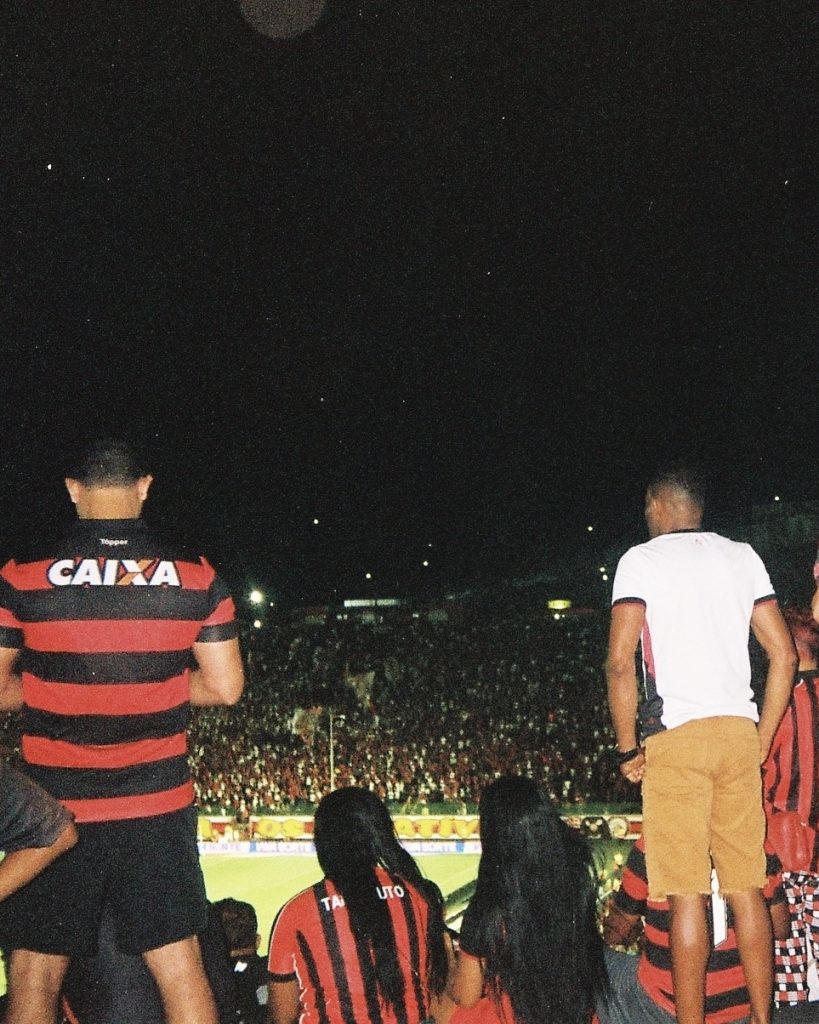
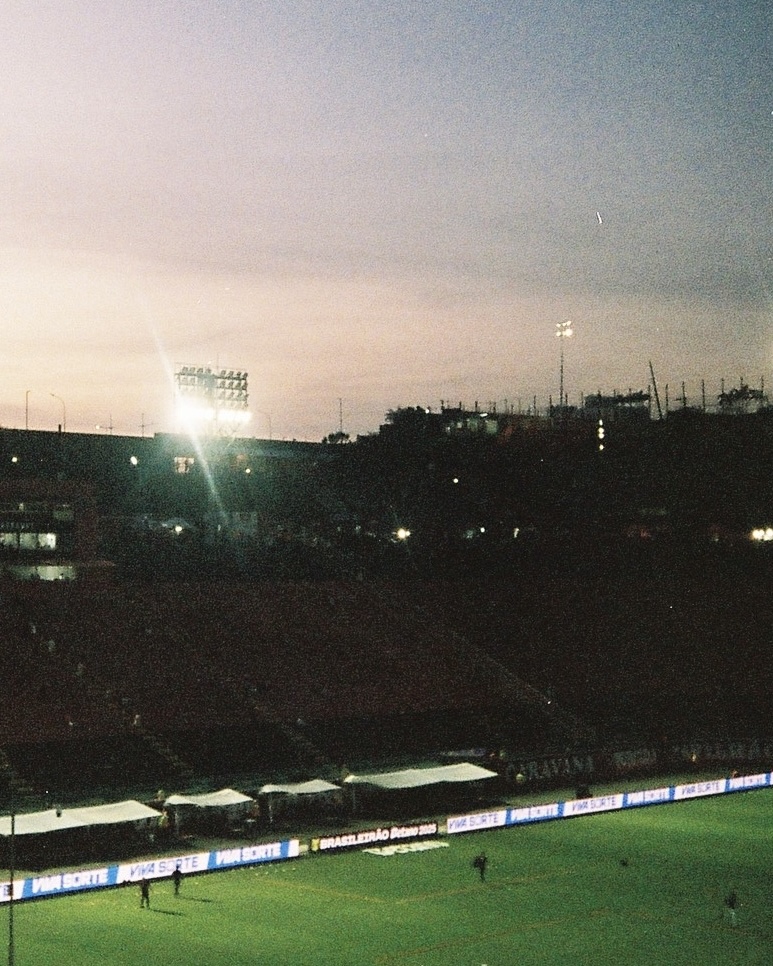
Ecstasy Under the Floodlights
The unease carries deep into the second half, until the redeeming 1–0 finally arrives. The sky above the torcida seems to explode as hundreds of flying beer cups catch the floodlights, and suddenly the tense atmosphere bursts into pure ecstasy.
I catch myself sharing the crowd’s collective relief as the referee blows the final whistle, and I make my way out.
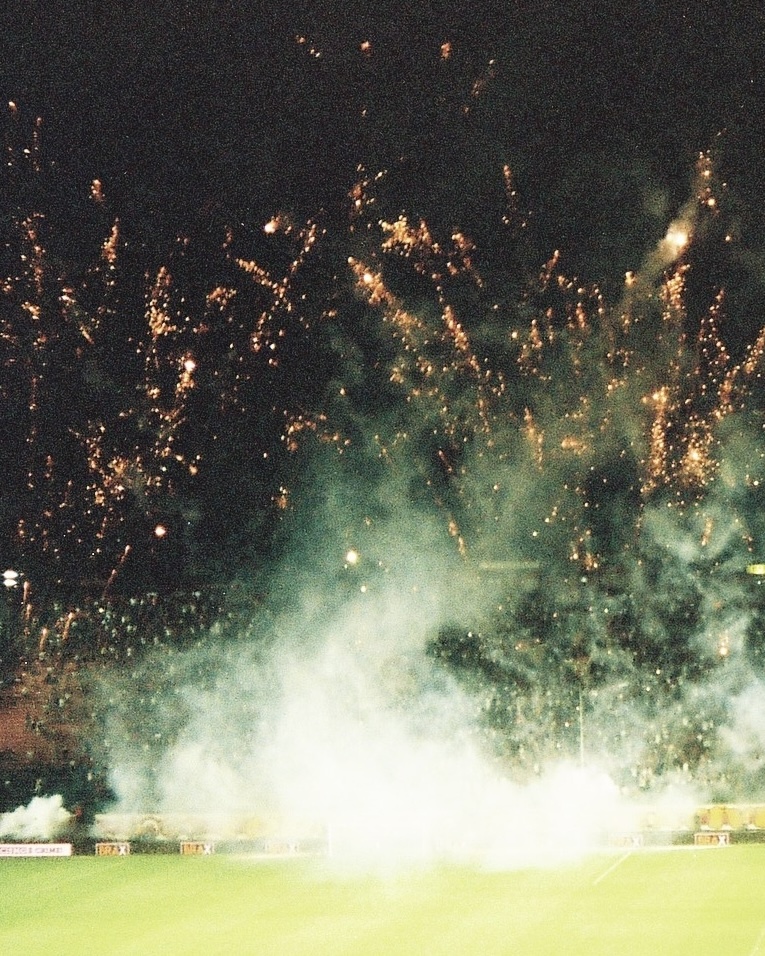
The Long Way Back
Caught in the thick traffic around the stadium, I retreat into my own thoughts. The visit to Vitória hits me with the full force of South American football romanticism. My mind jumps between memories from the past months, and a warm sense of contentment rises as I step into the final stadium Uber of my journey — catching the last glimpses of the fading floodlights in the distance.
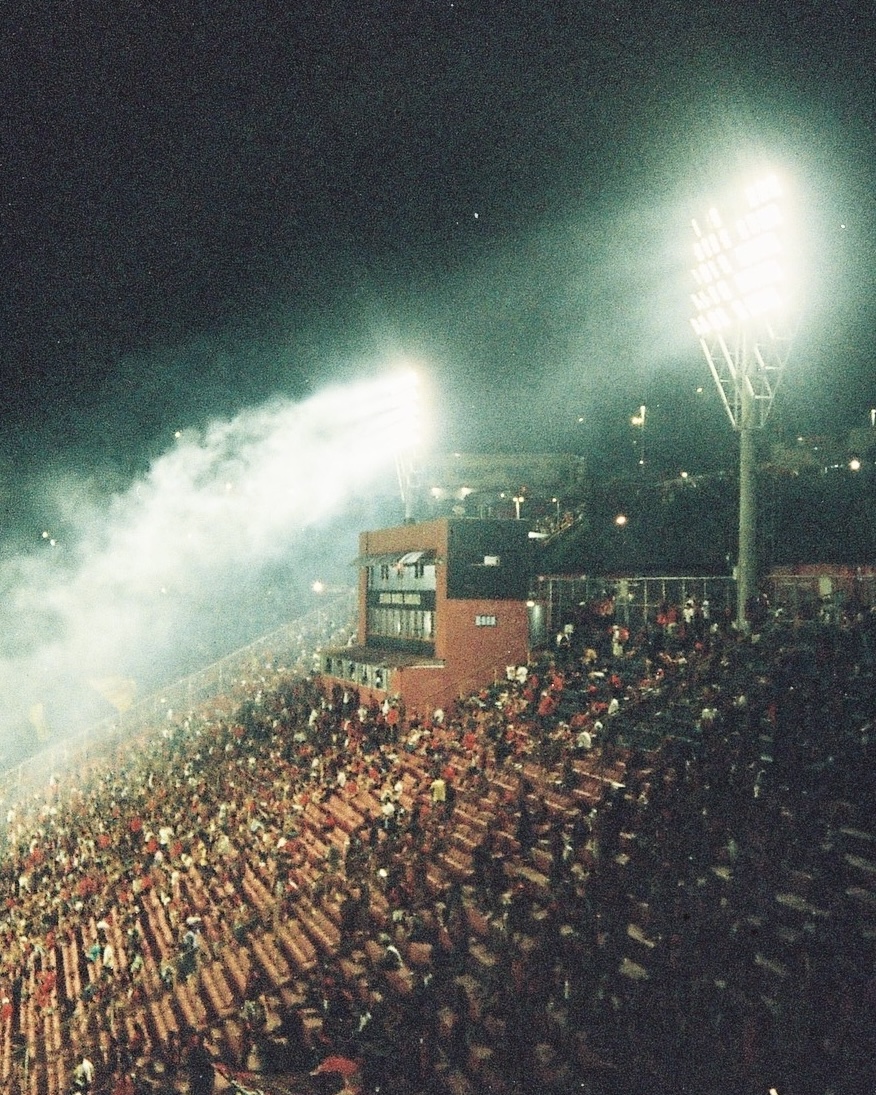
You can follow Jonas on social media by clicking here

There are clubs you follow for trophies, and clubs you follow because they feel real. US Pergolettese sits firmly in the second category.
Based in Crema, in the flat heart of Lombardy, Pergolettese are a proper provincial football side. No glamour, no illusions. Just football that means something to the people who turn up every week.
They play in Serie C, Italy’s third tier, a division where nothing comes easy and everything has to be earned. That suits Pergo just fine.
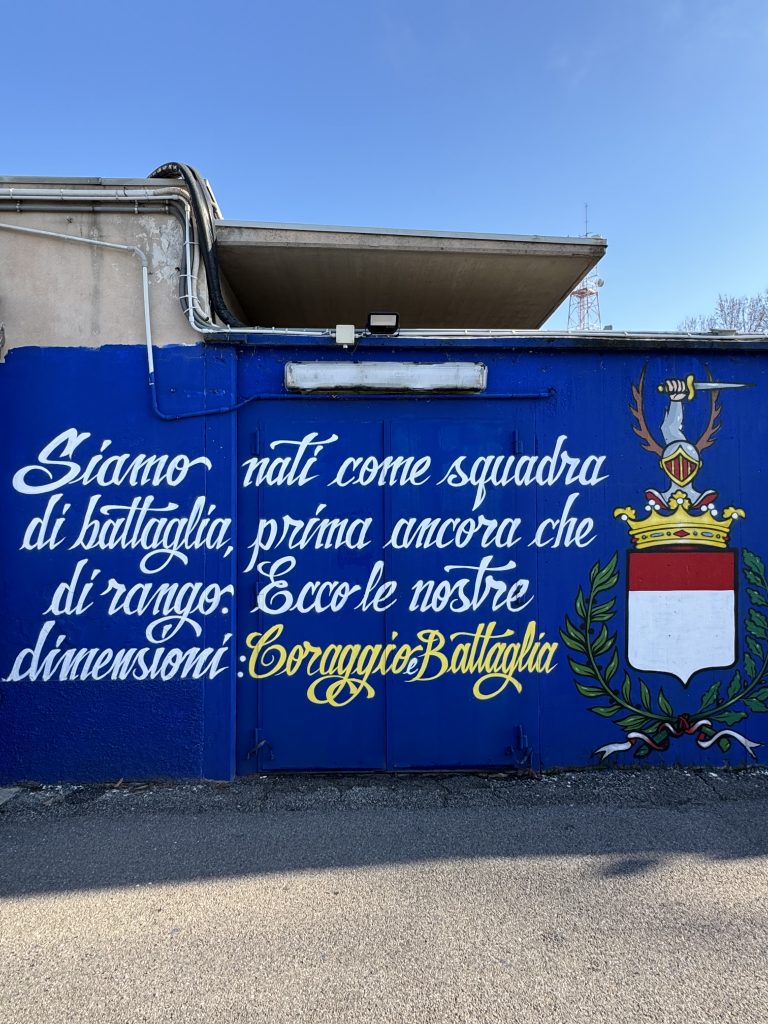
From Pergoletto to Pergo
Football in Crema officially started in 1932, when the club was founded in Pergoletto, a suburb of the town. Over the years, the name changed, Pergolettese became Pergocrema, but the identity stayed the same: local, stubborn, and proud of it.
There were highs. Winning Serie C2 in 2007–08 and finishing 11th the following season remains the best result in the club’s history. There were also lows. In 2012, financial problems caught up with Pergocrema and the club went bankrupt. Doors shut. Silence followed.
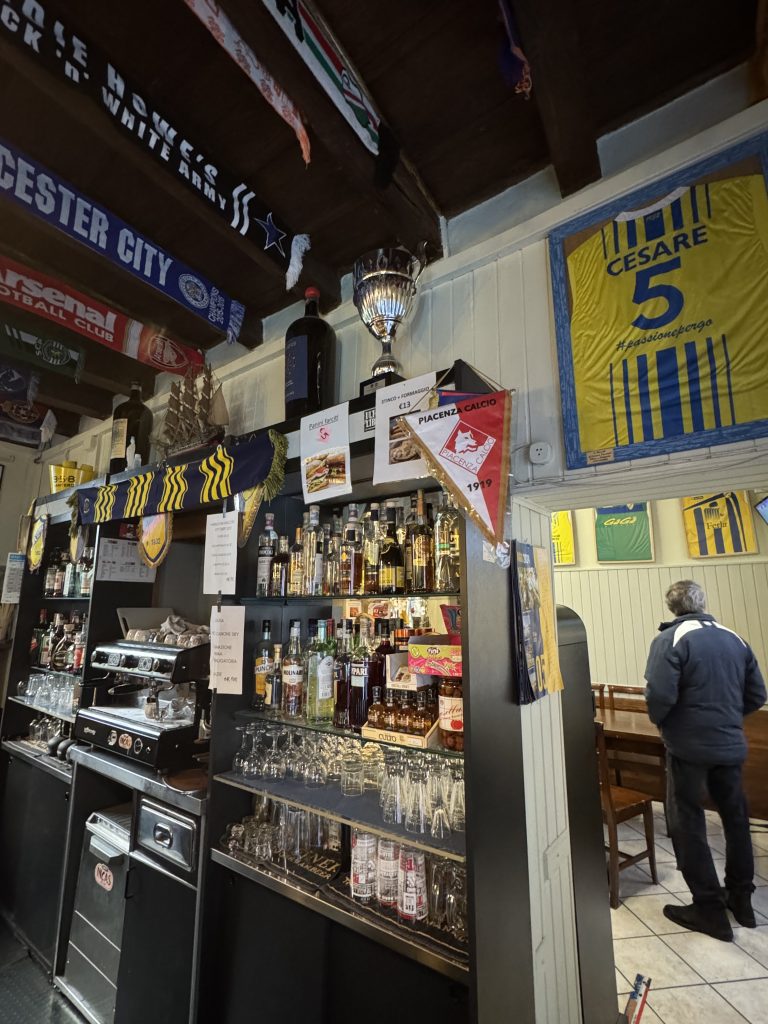

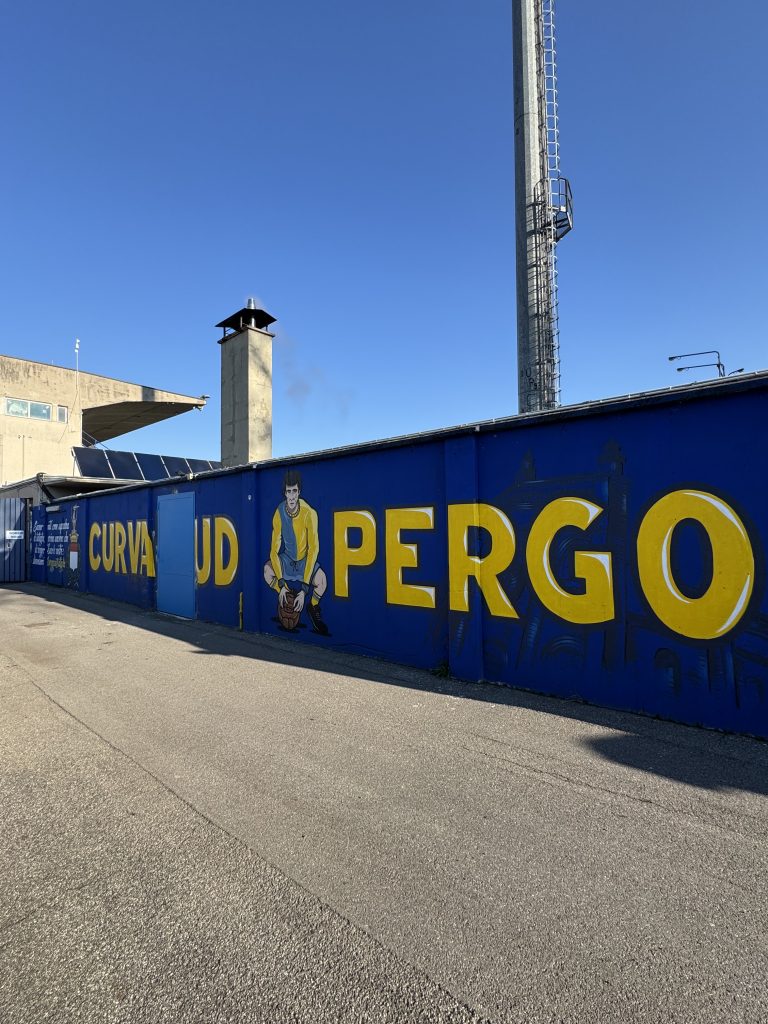
But football in places like this doesn’t just disappear.
A year later, the title of Pizzighettone moved to Crema, the name US Pergolettese 1932 returned, and the story carried on. Promotion followed, and by 2019, Pergo were back in the professional game, this time holding their own against clubs with far bigger names and budgets.
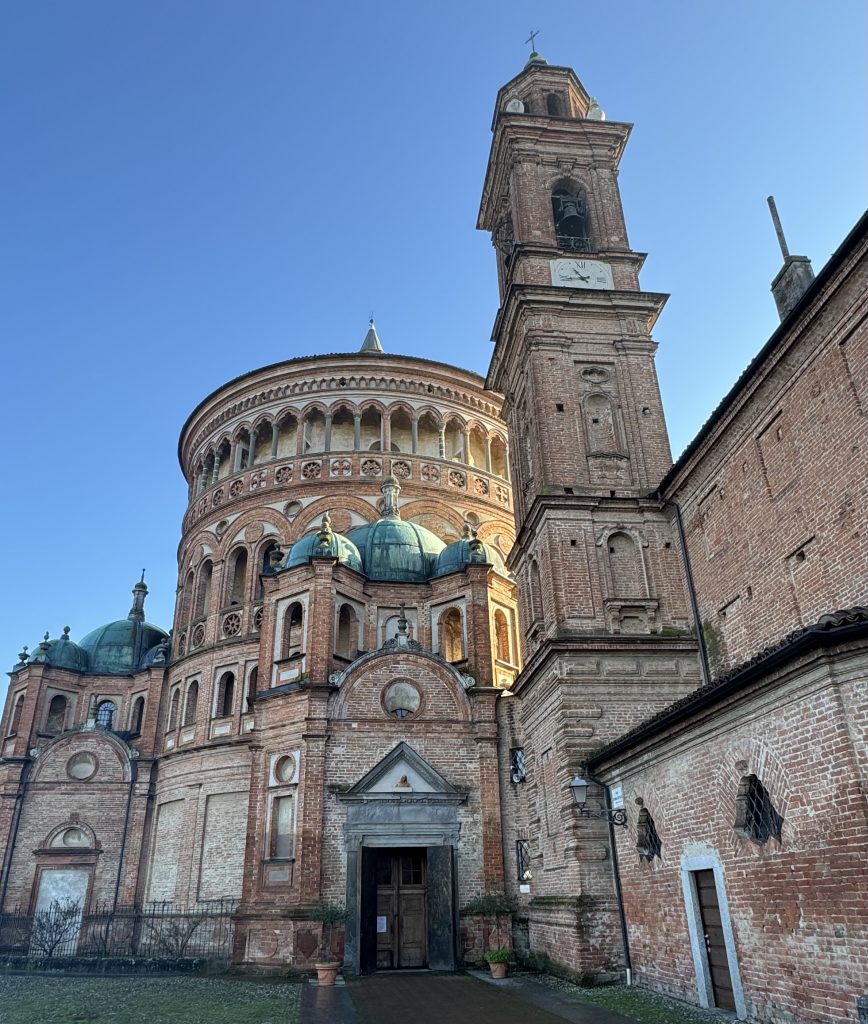
The Cannibals
Pergolettese are known as I Cannibali. It’s not a nickname dreamed up by a marketing team. It comes from how they play.
This is football built on physicality, pressure and refusal to back down. They don’t try to outplay you. They don’t pretend to be something they’re not. They get close, they make it uncomfortable, and they keep going until you crack.
Small ground. Tight pitch. Fans right on top of you. Away teams know they’ve been somewhere after a visit to Crema. Around here, football has always been more of a contest than a performance.
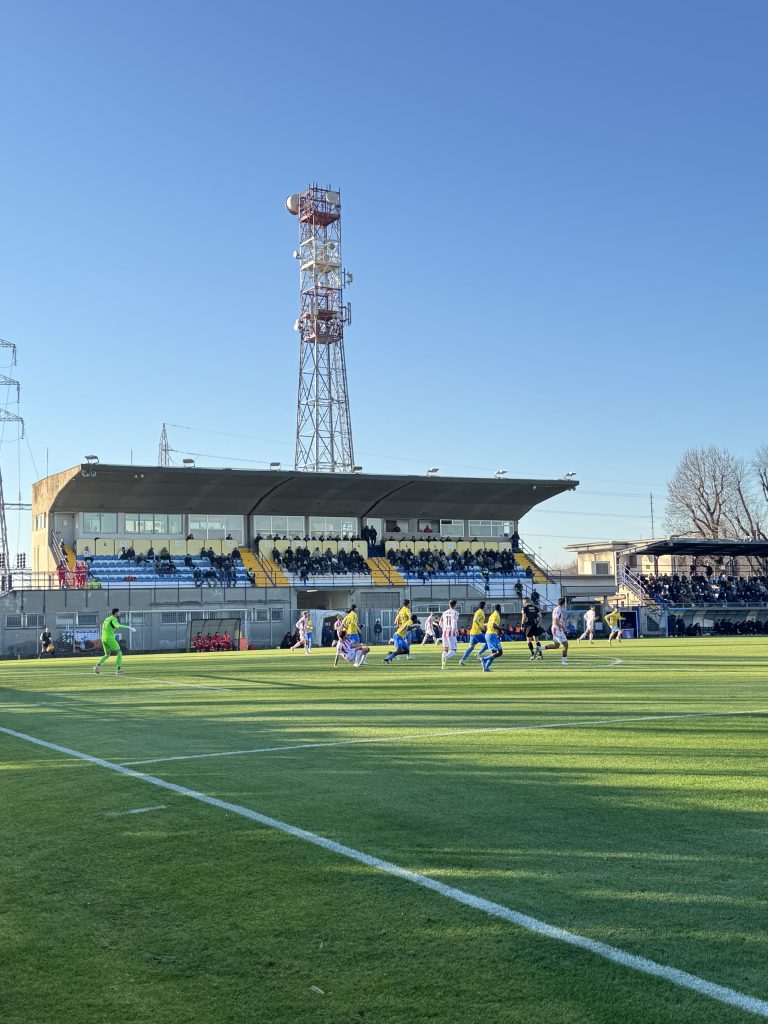

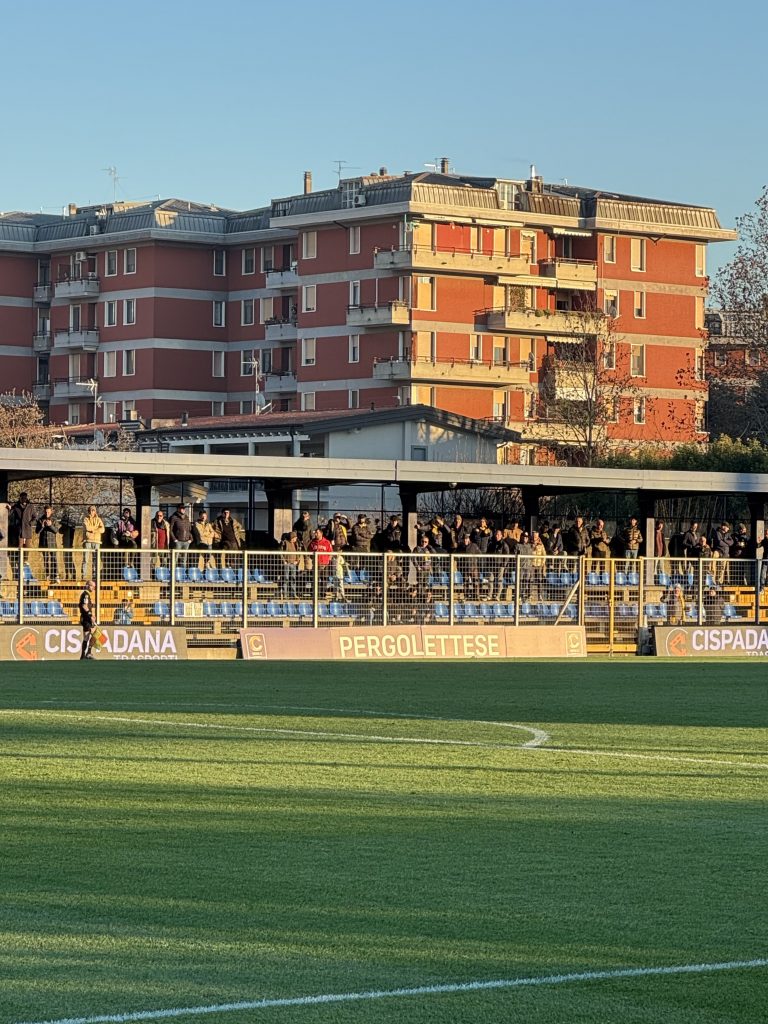
The Stands and the City
Pergolettese share the Stadio Giuseppe Voltini with city rivals AC Crema, which only adds fuel to the local derby. Rivalries with Mantova, Pro Patria, Lecco and others run deep, while friendships with Piacenza supporters and even Union Saint-Gilloise fans show how these connections stretch well beyond Lombardy.
Crema itself often surprises people. It’s best known internationally for Call Me By Your Name, filmed among its streets and piazzas, but there’s more here than cinema tourism. Agriculture, cheese, small industry and a strong sense of local identity define the town.
And then there’s the food. Tortelli cremaschi — sweet, stuffed pasta that confuses first-timers — alongside salva cheese, winter dishes like pipèto, and pastries that belong to this place alone. Matchday doesn’t end at the final whistle. It spills into cafés, bakeries and late conversations.
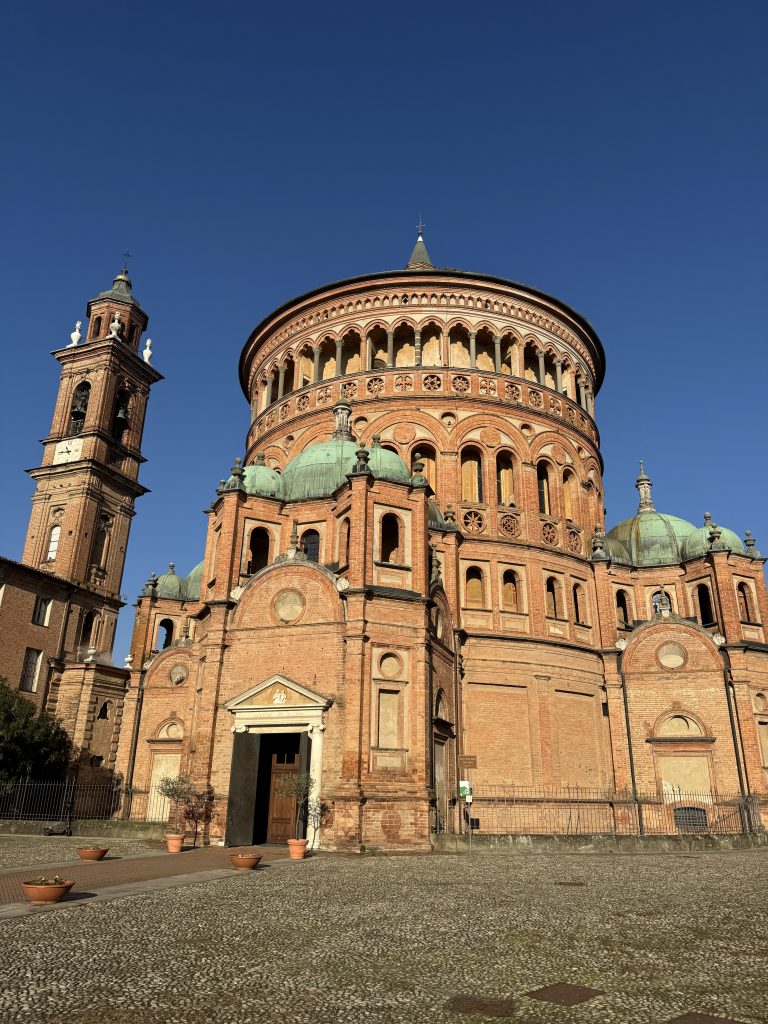


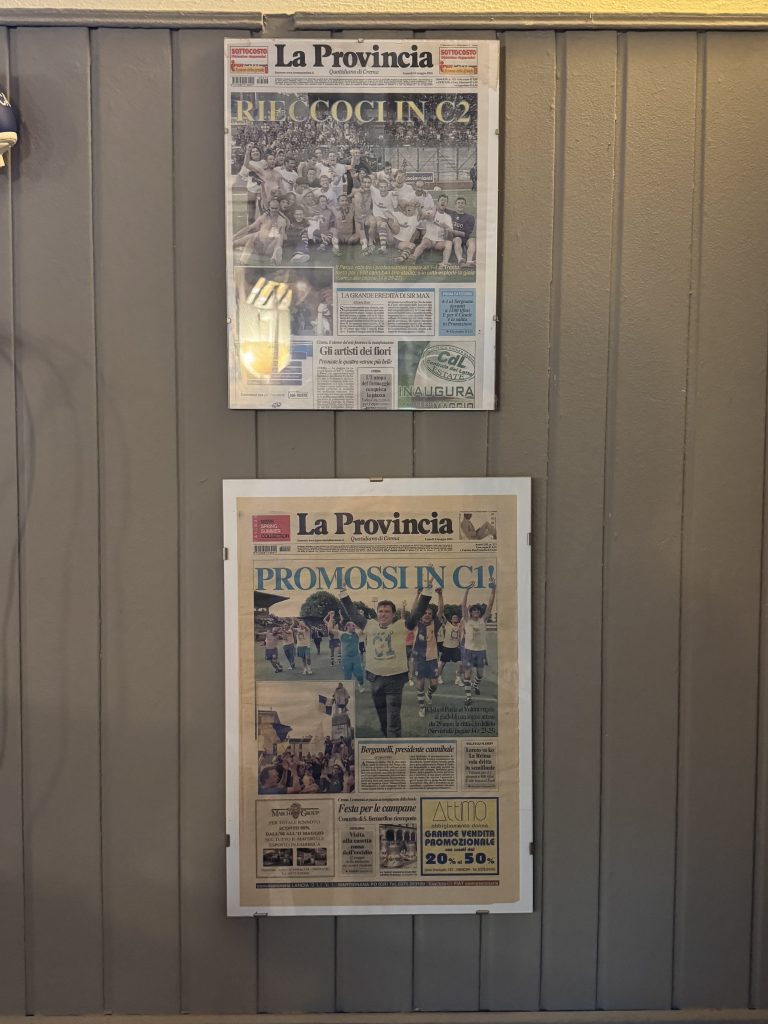
Today’s Pergolettese
The current squad is exactly what you’d expect from Pergo: experienced Serie C heads, younger players on loan from bigger clubs, and a core that knows what it means to play here. Captain Mariano Arini sets the tone, while the team continues to lean into that Cannibals’ reputation — organised, intense and difficult to beat.
They’re not chasing fairy tales. Survival, stability and pride come first.
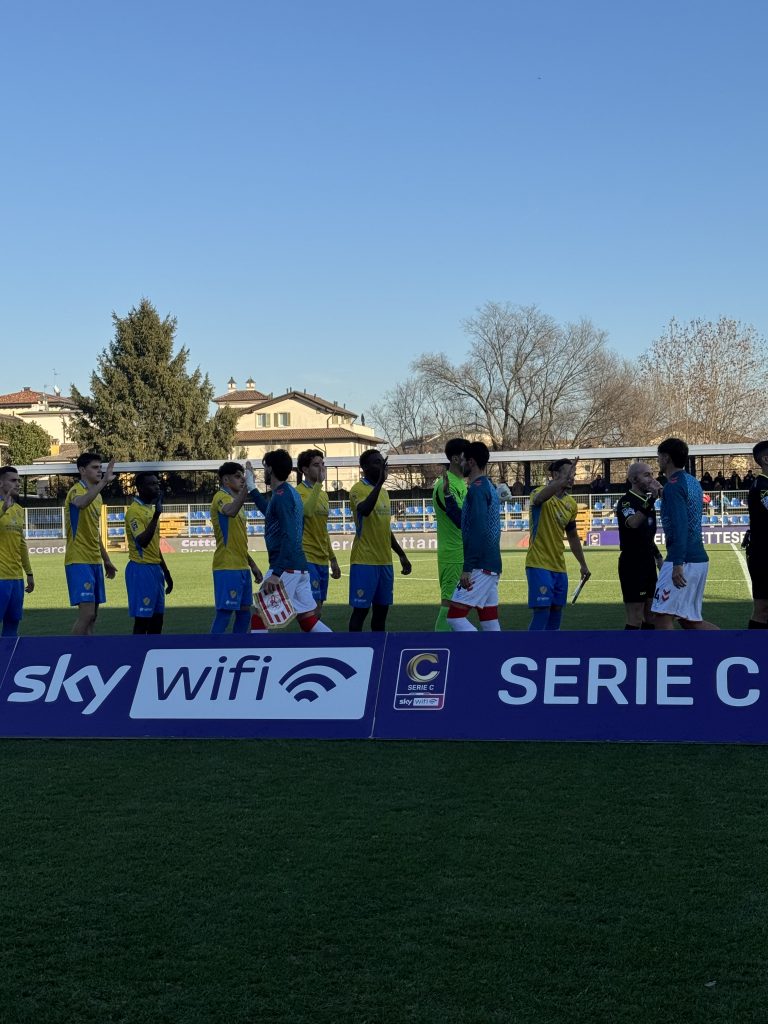
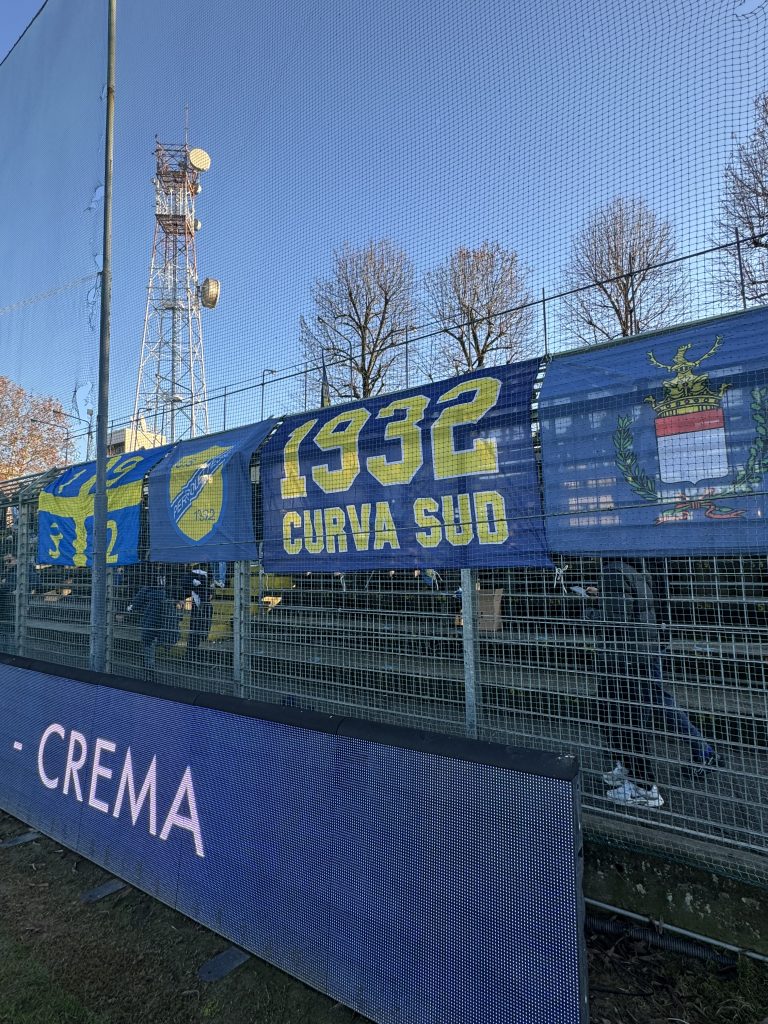
Why Pergolettese matter
US Pergolettese won’t dominate headlines. They won’t trend online. But they represent something essential about Italian football: community clubs, rebuilt after failure, still standing because people care enough to keep them alive.
In Crema, football isn’t about status. It’s about turning up, backing your side, and knowing exactly who you are. Pergolettese know that better than most.

All our thanks to Luca Gaiera and U.S. Pergolettese 1932
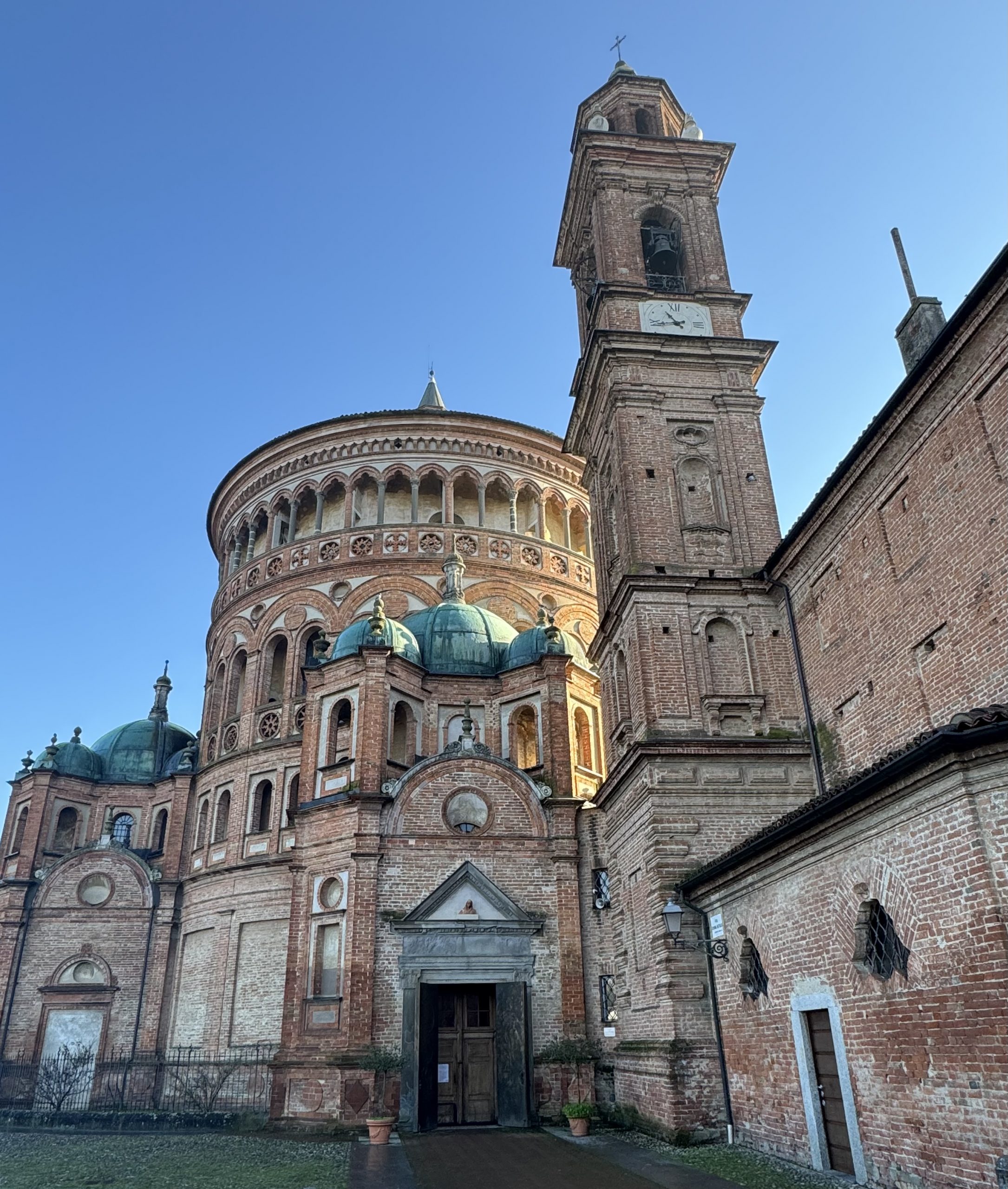
Some clubs are inseparable from their cities. Others are their cities. In Pelotas, in Brazil’s southernmost state of Rio Grande do Sul, football doesn’t just fill weekends — it defines identity. To understand this place, you have to understand Grêmio Esportivo Brasil. And to understand Brasil, you have to walk Pelotas slowly, listen carefully, and feel the weight of history in its streets.

Pelotas: A City Built on Trade, Culture, and Contradictions
Set between the Atlantic coast and the vast Lagoa dos Patos, Pelotas is a city shaped by cycles of wealth and decline. Once prosperous from the charque (jerked beef) trade, Pelotas grew grand theatres, pastel-coloured mansions, and wide European-style avenues — the architectural evidence of former riches.
Today, the city wears its past openly. The historic centre is elegant but weathered, proud but imperfect. Cafés sit inside faded buildings. Old men gather outside bakeries. Students drift between lectures and bars. Life here moves at its own pace, unbothered by modern Brazil’s obsession with speed.
And running quietly through it all is football.

The Club of the People
Founded in 1911, Grêmio Esportivo Brasil emerged when football in Pelotas belonged almost exclusively to white elites. Brasil chose a different road. It welcomed Black players rejected by other clubs and built its identity from the margins.
What was once used as an insult — Os Negrinhos — became a badge of honour. Later, the club would adopt another name that carried even greater weight: O Xavante. Inspired by Indigenous resistance and strength, the nickname came to symbolise bravery, defiance, and an unbreakable bond with the people.
Supporting Brasil has never been about glamour. It has always been about belonging.

On matchday, everything leads to Bento Freitas Stadium.
On matchday, everything leads to Bento Freitas Stadium.
There are no corporate lounges here. No polished hospitality zones. Bento Freitas is concrete, noise, flags, smoke, and sweat. The stands rise close to the pitch, trapping sound and emotion inside. When the Xavante sing, it doesn’t echo — it presses down.
Even in Série D, the stadium fills. Not out of hope for trophies, but out of duty. This is what being Xavante means: turning up regardless of logic.
For visiting supporters, Bento Freitas feels confrontational. For locals, it feels like home.
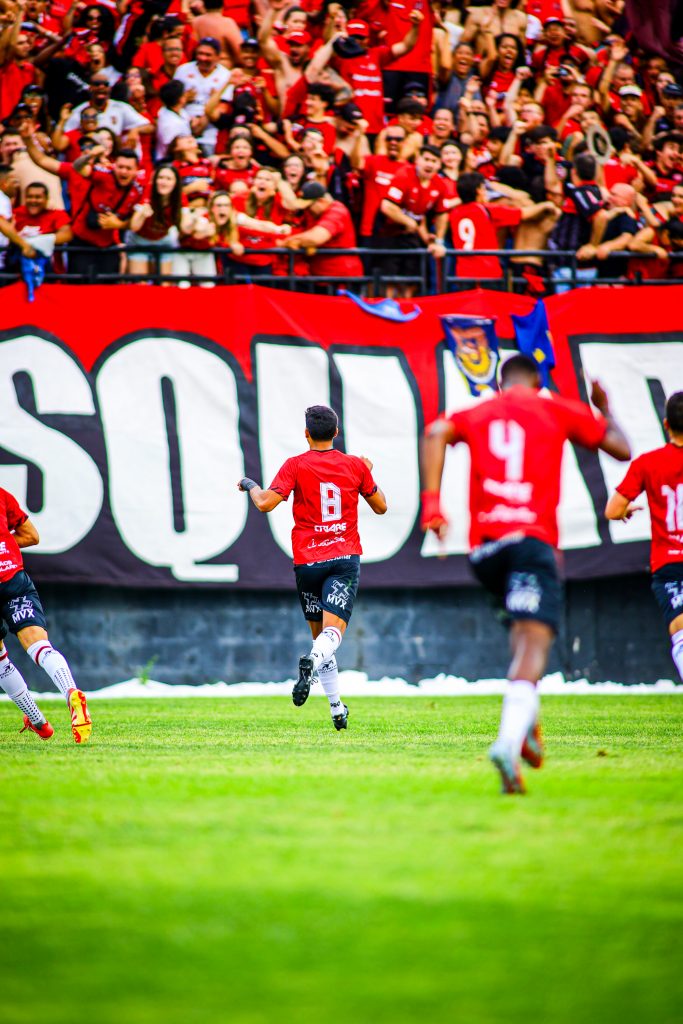
A Way of Life, Not Just a Result
To follow Brasil de Pelotas is to accept suffering as part of the deal. The club has beaten world champions, humbled Flamengo in front of 20,000 people, and flirted with the top flight — only to fall again.
Relegations came. Pain followed. Then tragedy, in 2009, when a bus accident claimed the lives of Cláudio Milar, Reginaldo, and Giovanni Guimarães. The city mourned collectively. Murals appeared. Names were sung. Memory became fuel.
This is where football in Pelotas shifts from sport to ritual.
Every chant carries history. Every scarf holds grief and pride in equal measure.

The People Behind the Badge
Brasil’s supporters call themselves A Maior e Mais Fiel — the biggest and most faithful. It’s not marketing language. It’s inheritance.
Support is passed down in kitchens and bars, from father to son, mother to daughter. Red and black shirts are worn daily, not just on matchdays. Taxi drivers talk tactics. Bakers argue about referees. Everyone has a story about Bento Freitas.
In Pelotas, football is conversation currency.

Beyond the Stadium: Living Pelotas
A weekend in Pelotas doesn’t end at full-time. It spills into bars, cafés, and late-night conversations.
Start with coffee downtown, where old theatres and colonial façades frame everyday life. Try local sweets — Pelotas is famous across Brazil for its doces, a legacy of Portuguese influence and sugar wealth. Walk toward the waterfront as the light softens, and the city feels almost Mediterranean.
At night, tables fill slowly. Conversations linger. Football inevitably enters the room.
This is not a city that performs for tourists. Pelotas doesn’t sell itself loudly — it waits to be understood.
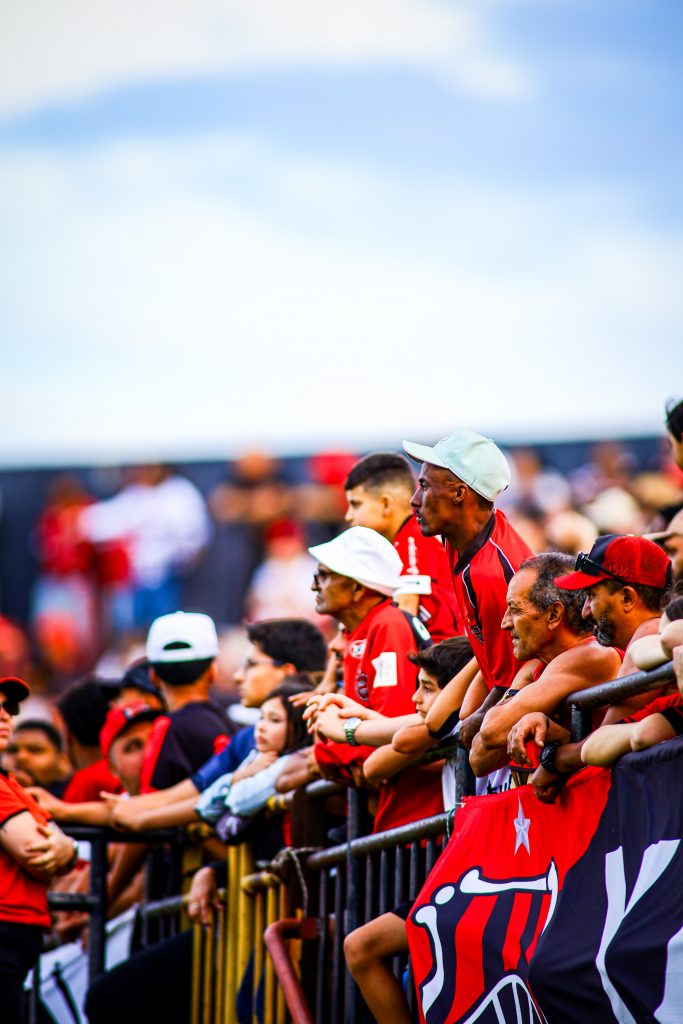
Why This Place Matters
In an era of sanitised football, Pelotas offers something increasingly rare: authenticity without performance.
Grêmio Esportivo Brasil exists outside the spotlight, powered by memory, resistance, and love. The club’s story mirrors the city itself — proud, wounded, resilient, and deeply human.
To visit Pelotas is to step into a slower rhythm of football and life. To stand at Bento Freitas is to feel what the game once was — and still can be.
This is not about trophies or trends.
It’s about roots.
It’s about people.
It’s about being Xavante.
Avante.
